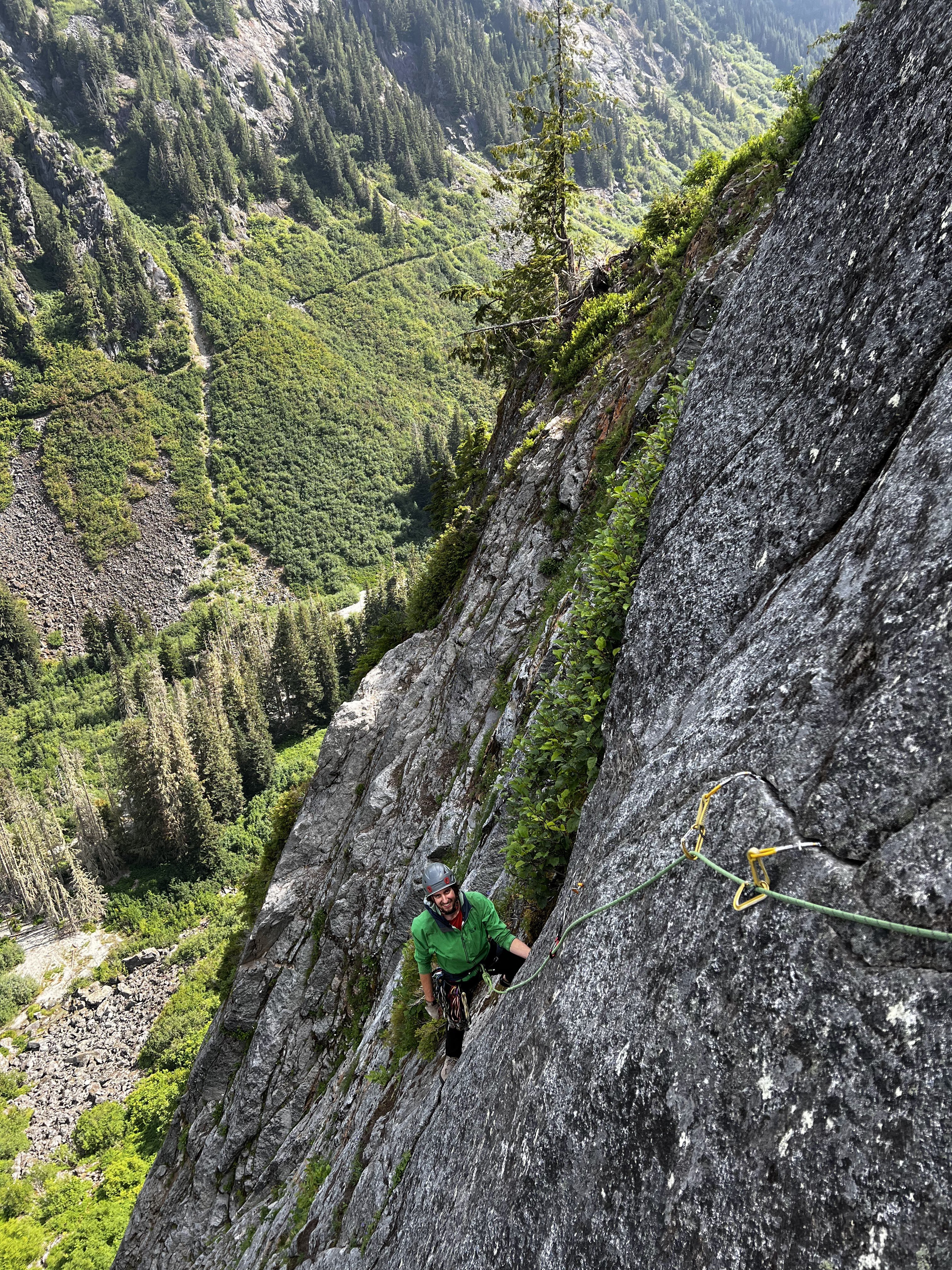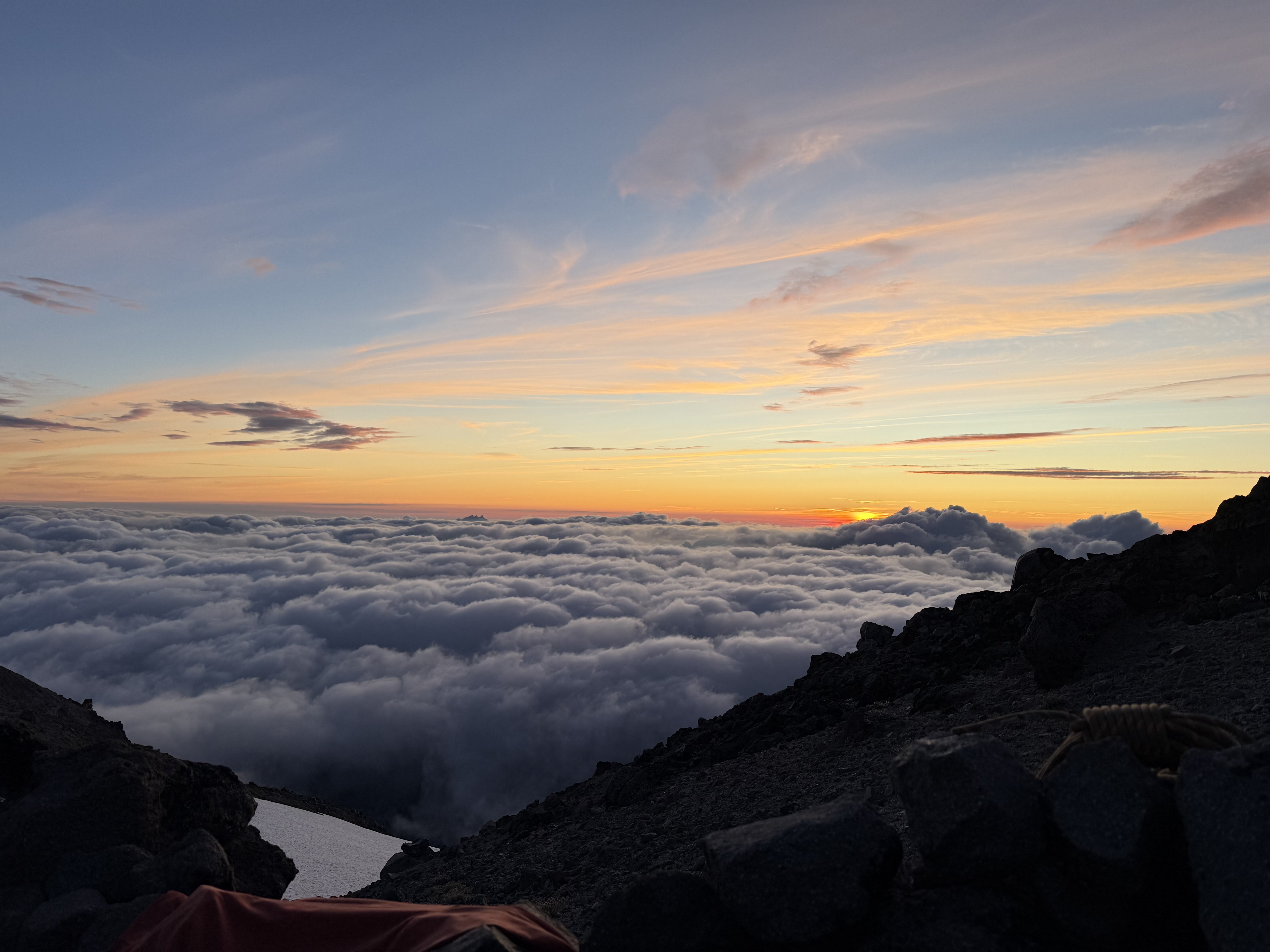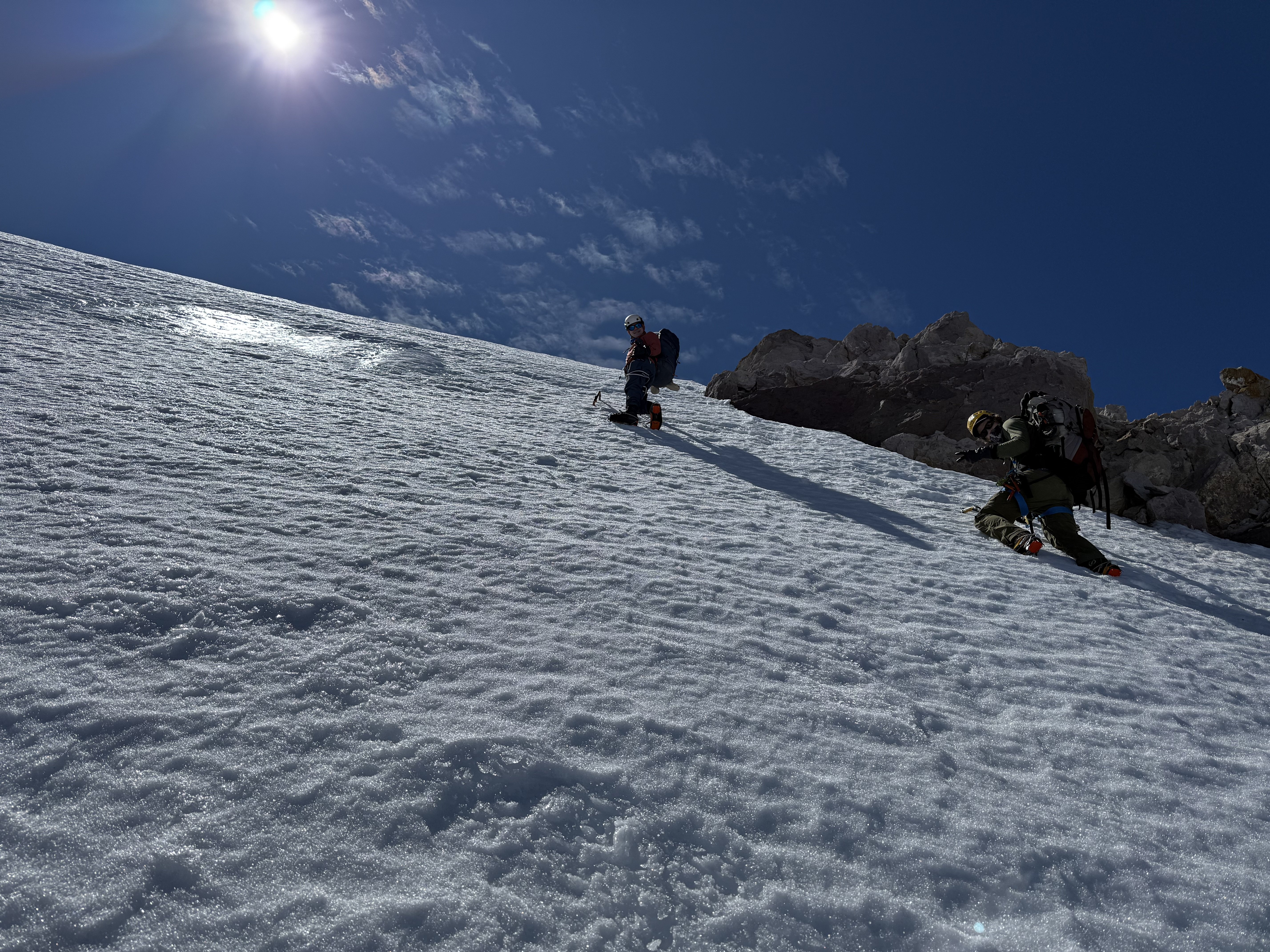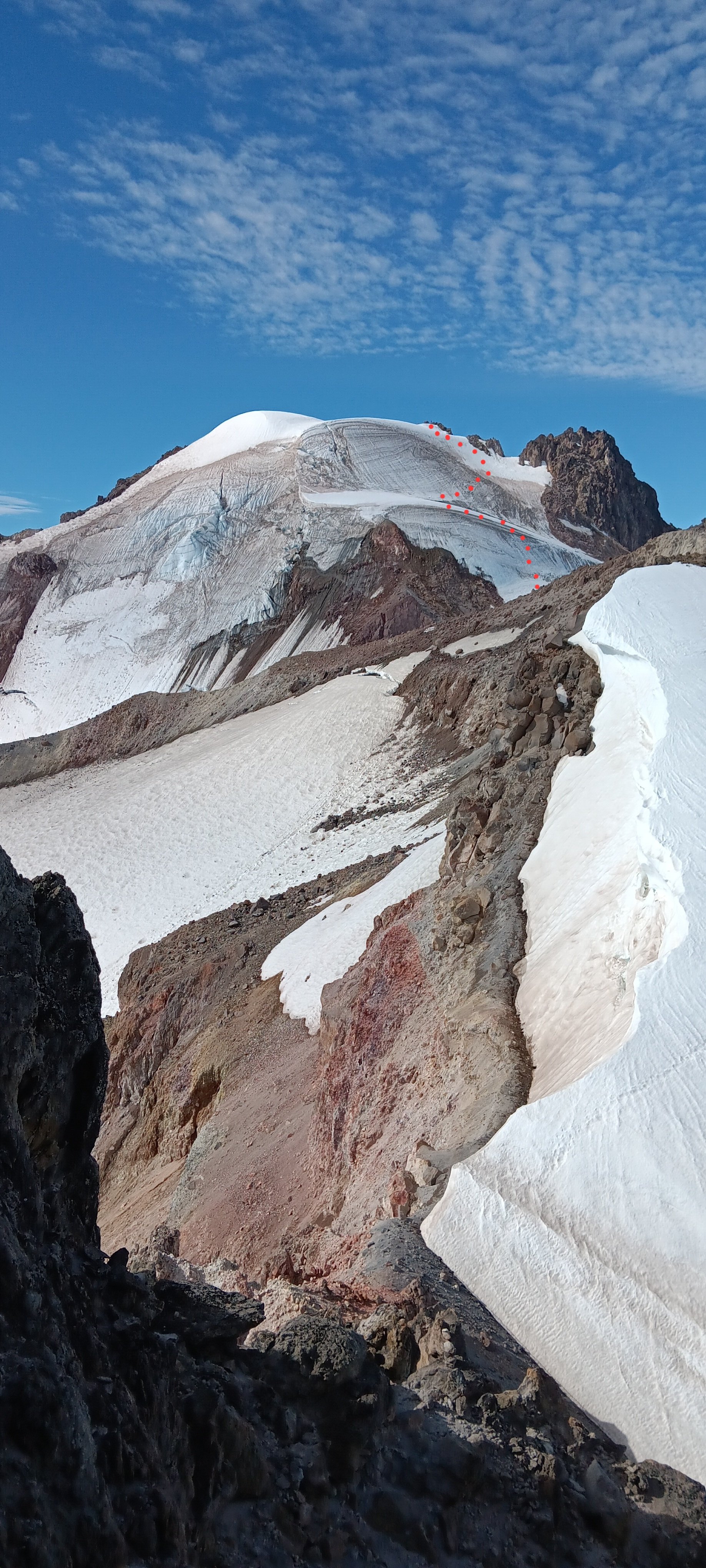Leaderboard
Popular Content
Showing content with the highest reputation on 08/11/25 in Posts
-
Trip: Eldorado zone tour, with EMS - South and west ridges of Eldorado, SW face of Early Morning Spire Trip Date: 08/08/2025 Trip Report: Got to do some routes in the Eldorado neighborhood from a base camp last weekend. This was another trip I’ve been meaning to do for a long time where the pieces finally fell into place. Climbed with Ben who has learned quickly in the three years since he started climbing. Solid partner, his only real error was leaving glasses back at the car. On the first day this was mitigated with some tmnt Inuit tech. Cowabunga! Luckily at camp there was a climber who elected to stay there while his guided team climbed the E ridge. Heard the guide had extra shades and we arranged to borrow them for the weekend. Sky harp We set off for the south ridge. I love knife edges so found the route just barely in the worth doing once category. If you don’t particularly enjoy knife edges there’s no reason to do this climb. Unincorporated choss county Some fun atmospherics helped make it somewhat enjoyable despite some of the worst quality rock I’ve climbed. We counted it as good mental prep for W arete the next day. At the end of our three hour tour camp to camp we arrived to find the guide-lended glasses waiting for us. Most of the rock climbing in the next two days was in the shade, but this was still quite the score. Got up early the next day for the W arete and kind of raced another party departing camp right after us. There turned out to be a third party on the route that day too (!) Below Dorado Needle col we saw tracks through a snow bench above and left of the tarn, and followed these around to slabs near the sit start of the route. We misjudged the heathery path from below. What looked fine turned out to be dirty, crumbly, overly narrow and exposed, with mostly down sloping rock and dirt. This was a bit of a traverse coming from the NW to the ridge around 6700-6800’. Not at all recommended, there must be a better way, maybe more directly from the west? The other two parties took the considerably higher entrance from snow that bypasses all the green stuff, which seems more appealing in retrospect, though it looks like it has a bit of hazard too (steep, bad runouts). We were glad to be in front. There was one particularly thunderous episode of rock fall accompanied by muffled shouts and we were relieved to eventually see all 5 climbers back at camp that evening. After pulling through some legitimately scary terrain we soloed up briefly sound rock before it got questionable again. Then we started to simul. I think two blocks got us into the gendarmes. We had climbed up a chimney to a piton, but it didn’t look anything like photos of the crux traverse. After some confusion we saw another piton down below and realized we were above that crux. We rapped past it. It looks exciting, kinda wish we climbed it. Unintentionally mimicking the rocks’ posture From there two more blocks got us past the snow into lower angle terrain where we unroped. I found mostly pretty good stuff to the summit. The path of least resistance isn’t always the best path. It was so early I proposed heading back down for the SW buttress of Dorado Needle but we elected to rest up for EMS instead. With the south ridge the day before, the west arete completed the Eldorado compass for me (north and of course east ridges climbed before). South ridge! meh I enjoyed solitude on the summit for a while and left as a large group of sunburned youth neared the top. The hours drifted lazily by. We chatted with various day trippers throughout the afternoon. Next morning another early start had us retracing our steps to Dorado col. Celestial choss, earthly choss This time we passed by the tarn and its outlet stream. One slope looked inviting but it cliffed out on the other side. Proceeding lower we found a nice path through trees to cross the ridge with friendly heather downclimbing. EMS presents quite the striking mien all along the approach. We met someone at camp the night before who had his own route beta for EMS which he shared with us. Compared to Nelson’s it had a direct start, and above that, more of a diversion to the right and back left, rather than straight up. Both of these variations turned out to be good calls. The start was a little tricky in terms of climbing and pro. First piece The climbing quickly got to be really fun. After about 70m I took the lead. After scoping a more direct line I tried the shallow right facing corner diversion to the right, and was pretty delighted with this section. I think this wide low angle splitter was in this pitch. I stopped about 70m later just below the ledge below the crux roof. Ben took over again and dispatched the slightly wet moves and drifted out of sight. This pitch ended up maybe 80m with a little simuling to the slab under to the roof. As I followed pitch 3 the rope hung over some excellent mid 5th friction slabs, where Ben had fortunately not placed pro. I took these optional sections (easier ledges around) to make the pitch even better (out of frame right of this photo). Pitch 4 was another rope stretcher with quality stone and low-mid 5th climbing. Ben took off again and neared the ridge crest. He selected a scruffy 5.10 chimney to get us to the slab and stopped there. I got to lead the finger traverse above this slab, another route highlight. I crossed the crest and continued up it, placing hardly anything, mostly focused on keeping the trailing rope from crossing the abundant choss that now sadly replaced the excellent rock. A seventh rope stretcher got us near to the summit ridge. We did one more short pitch that turned out to be unnecessary, should have unroped after 7. Tempered expectations may have been a factor, but we reveled in how good this route turned out to be. It’s not Stuart range classic quality but I think it’s up there with some three-four star WA pass routes, with an obviously much more engaging approach and return than you can find there. Our descent began with sandy goat ledges on the south side of the ridge. When this cliffed out we crossed back north. It was very exposed here with a deep moat below, but with bomber easy staircase rock leading down. There was one low 5th body length, an awkward long step and then we were at the moat. The gap was significant but absolutely doable. Still got high dive butterflies before finally making the leap. When Ben’s turn came he sprang from both feet, launching far beyond the gap and came skating into me lol. The hypothetical descent to the south had looked atrocious during the approach, and there is at least one epic going that way documented here on cc. We instead followed the advice to climb snow to the choss saddle north of marble peak. At the crest we saw rather steep snow to the east, so followed the snow up and south to get a look around. This passed so close to the summit we thought we might as well tag it. Took rock down here to bypass the steep snow. I scouted south while Ben scouted north. We never found existing anchors, so when a good crack on the north end below the steep snow presented itself we set an anchor and rapped down. 70m easily made it, might have been 25m or so. Next we crossed the McAllister, almost exactly matching my track from 3 years ago (snow levels early August this year look even lower than early September 2022). Having decided to skip our last night out, we zipped over to camp where we packed up, ate dinner, and quickly hiked down, getting past the boulders and close to the bottom before pulling the head lamps out. The dip in the creek at the end was extremely necessary and welcome in a dumbfounding sort of way. Gear Notes: Doubles 0.3 to 1, single 2 and 3. Some C3s and nuts. Ax and crampons. 70m rope. Radios were very useful for our long pitch strategy on EMS. Approach Notes: Counter clockwise1 point
-
Howdy friends, it's my pleasure to present you all with the newest Washington classic - Negligence located off the Hannegan pass trail. This is a stellar line that links up several crack systems to access a shield about halfway up the large buttress seen across the valley. We spent most of the spring/summer of 2025 developing and cleaning this line and would like nothing more than people to get out there and climb the thing. Approach - From the Hannegan Pass Trailhead, hike Hannegan Pass Trail past the first two switchbacks about halfway to the campsites. Shortly after the second switchback, drop down the open talus field on your right. Continue down the talus almost to the creek, cut right into the woods, then make your way down to the creek from there. Jump from a large log across the first narrow creek band and you’ve found the tunnel through the slide alder. Be bear aware here, we found multiple fresh signs of them (probably due to the golfball sized salmon berries). Follow this until the major creek crossing, then cross the creek. After crossing, head through the trees directly towards the nose of the buttress, hopping another small creek braid before entering into the talus for the final approach. Follow cairns up the talus, then follow the path (likely overgrown) through the underbrush to the base of the wall. The route is located a couple hundred feet to the right of the nose. In total, the approach is around 2 miles, but tends to take around 45 minutes, give or take. Climb - This route takes a series of remarkable crack systems 400 feet up the Hannegan Buttress over four pitches. Protection is traditional, styles vary from off-width to tips, and all anchors are bolted for ease of descent (316SS all around). Each pitch ends at a conferable belay ledge. Pitch 1 - Depending on snowpack, either hop right into the offwidth start, or cross a deep snowfield to dig right into the rest of the pitch. A long continuous crack system varies from tight fingers to the wide stuff, favoring tight hands and good feet. This pitch reminds me of a steeper version of the Apron with lots of flared hands, sustained 5.9 climbing with several good rests. The bottom wide bit is a little dirty and will probably remain so since it gets buried under the snow pack, but it quickly cleans up. This pitch would be a classic all on its own. (5.9+) Pitch 2 - Amble up from the belay towards a notch gully in the leftward wall, clipping in a pin down low, then placing a bit of gear before firing a few fun moves to gain the gully. Make your way up the 4th class to a great ledge to top out this short pitch. (5.8) Pitch 3 - Step left from the belay and begin climbing up a wide box. Tread lightly on the red stone before pulling into the right-facing dihedral towards the alcove. Exit the alcove on thin tips, and continue upwards until bomber hands placements allow you the confidence to trend left in the flake system. Follow the flakes until the roof, then brace yourself for a thin, thoughtful, arching crux protected by small gear as you pull out onto the Shield. Save a .2 and your smallest cam for the business. The crux of this pitch is short and sweet. Its probably easier for folks with thin fingers or long arms and can easily be pulled through on gear. (5.10d) Pitch 4 - This one's in the money for best pitch in all of Washington! Climb the stupendous splitter to the top of the Shield. It is as good as it looks. Some finger crack moves will take you past a loose book size rock (never fear, that thing isn't coming out) to glorious hand jams. It gets a little steeper at the top so be sure to take in the scenery and catch your breath a bit. Top out on a large ledge. (5.10b) Descent: Rap with a single 70m rope. Use the intermediate anchor on the ledge climbers left between the P1 anchor and the ground. Otherwise, just rap the route. Gear - 70m rope Double rack .2 - 3. Singles of 4, .1, and a purple c3 (or equivalent tiny cam, or trango gold ballnut… the best option) to protect the crux. Wires, all sizes. Consider triples in .4 and .5 for the long first pitch and a 5 if offwidths make you shake. Background - The vision and much of the labor for this route came from Nate Fearer with additional help from myself, Neil Miller, Spencer Moore and Alex Pederson. The route name comes from the fact that Nate started this project while on paternity leave and completed it within the first four months of his son's life (he really is a good father and loving husband). The route was established ground up as an aid line, then dug, cleaned, and scrubbed. Then scrubbed, then scrubbed, then scrubbed. Further ascents will clean it even more. Also, we found some evidence of prior development out there including a bolted (2 pitch?) line left of the nose. If anyone has information on this route please let me know.1 point
-
Sperry Peak – NE Ridge On August 3 Gabe and I climbed the NE ridge of Sperry Peak. Due to low clouds, we had about ~100ft of visibility until we reached 5000ft. As a result, we generally stayed near the crest of the ridge, being unable to see if moving left or right would be advantageous. Given that, our experience of the route could be substantially different from prior or future parties. We suspect that some (but not all) of the more unsavory portions of the route we climbed could be avoided with better route finding. The upper half of the route has some of the best ridge scrambling I have done in the cascades, including a spectacular section of knife edge ridge on good rock with great gear. However, on the bottom half of the route, gear is sparse and it is advisable to make an offering to the veggie gods before your ascent as many pitches are vertical bushwhacking requiring the climber to put full faith into a wide array of plant species to make upward progress. On one particularly memorable pitch I took a breather while standing on a curved cedar branch hanging several feet out from the rock before lay backing up the rest of the branch to reach a belay. For the route we climbed, a modern grade of 5.8R seems about right. Car to car we took approximately 16 hours. Overall, the rock was surprisingly solid (when you were touching it) and we didn’t experience any runout hard moves. For climbers interested in getting a bit off the beaten path with a tolerance for schwacking (both horizontally and vertically), I recommend the route. Approach: Following Beckey we took the Sunrise Mine trail to ~3100 feet and then started contouring north. After a too short and pleasant section of fern bashing, we quickly dove into steep dense jungle. Several cliff bands pushed us downhill toward the top of the slabs with the waterfall you see from the trail. Unfortunately this way doesn’t go, so we turned around and followed a cliff band uphill until finding a short class 3-4 gully which allowed passage. Continuing to contour we crossed several steep gullies (requiring a bit of luck to find reasonable scrambles to get into the gullies) with running water and a couple sections of class 3-low 5th slab before accessing the ridge from its east side at ~3500ft. If we attempted this route again late in the summer (so the water levels are low) we would consider approaching directly from the car. From satellite images it looks like it would be possible to follow relatively open stream beds to almost the bottom of the ridge. Of course we haven’t tried this approach so no guarantees! In the below picture I marked our approximate ( I cannot emphasize enough how approximate this is) approach in green and the possible alternative approaches mentioned above in red. The parking lot is for the sunrise mine trail is circled with blue. Climb: Hit the ridge and follow your nose. Many options are possible. Descent: Descend the standard Sperry scramble route. Gear Notes: We brought doubles in .4-1, a single .3, 2,3, and one set of nuts. For slings we brought 12 Singles, 4 Doubles. We used a 60M rope. Bring a nut tool to clean out placements. If we were to do the route again, we would bring 6-8 doubles and fewer singles. Lower down on the ridge the larger cams were surprisingly useful. Two 3’s and a 4 would not go unused, though they are not necessary. Final Thoughts: We found a couple pieces of fixed gear. Any of them yours? I would be stoked to hear about other people’s experiences on the route. Has anyone done the northwest ridge? The upper portion of it looks interesting! Pictures: The Fixed Gear: The access gulley on the approach. Many of lower pitches on the ridge were similar to this: Some pictures on the lower half of the ridge: Unbeknownst to me, I picked up a stick while following a pitch: And now some upper ridge pictures!1 point
-
Background: This is a trip report for the frostbite ridge of glacier peak. WHo was there? Me (the slab doctor), the anchorman, and capt. Kirk himself. In yearly tradition we go climb something every summer. Unfortunately the final disciple (Professor Science) was unable to make the trip due to life choices outside of his own comprehension. Day 1: after getting to the North Fork Sauk trailhead somewhat late in the afternoon, the disciples hiked up to the PCT and then down slightly to camp in the large bowl just below the ridge. stats: 11.5 miles and 4.8k gain Day 2: We slept in and hauled butt down to the Kennedy creek crossing. we had heard that you must actually wade to get across this but it was no issue for us to cross on logs. We then started the climb up to glacier creek and left the PCT there. Shortly after leaving the PCT we were at the toe of the kennedy glacier (3:45 pm?). There is a nice bivvy site here. We decided to attempt to make it up to the bivvy at 8.8k. Going up the side of the Kennedy was horrendous work. Large patches of glacial till/mud, exposed blue ice, and loose gravel made for tedious going. We made it to 8.8k camp at 7:30/8pm ish and were all pretty kicked in at this point. The bivvy was one of the best I have had, a beautiful inversion left us above the clouds with stunning views of Baker, Shuksan, and the North Cascades. Unfortunately the anchorman had the piles & was shitting a lot over the last 2 days. There are 2 flat spots for tents at the 8.8k site, but only 1 of them has a substantial rock circle. I would highly recommend not sharing this route with other parties for this reason, and for the significant choss hazards on the ridge that arise late season. stats: 12 miles and 5k gain Day 3: We were going by 7:30/8am up towards the rabbit penis on what I can only describe as some of the worst choss of my life. We were kicking down serious amounts of rockfall, I'm talking 4 or 5 basketball sized rocks at a time that would not stop and continue off the ridge until they were out of sight. Again I would really not want to be behind another party on this route, unless there was significantly more snow. After going tucking around to climbers right the rabbit peen we got on a short section of steep snow and then a cool sidewalk with significant exposure above the upper kennedy. We gained the ridge again after the sidewalk and crossed over to the other side. Here we went almost between the rabbit ears, and after spotting a cairn on the other side of the ridge we down climbed and began the short up and down section before the final ice pitches.IMG_3263.HEIC The ice was pretty trivial and we probably could have soloed all of it but out of an abundance of caution we pitched out the lower section. We then de-roped and simul soloed the final 100 ft of snice / steep snow. If you stay to the right side you will put out exactly below the summit rock jumble. After shmoozing it on the summit with a cool party of climbers from Kerala who offered us whiskey & cigs, we began our mad dash out. Our goal was to make it to the (former) Mackinaw shelter camp site which would leave us with a cool 5 miles to complete monday morning --some of our disciples had work the next day >: ) . We again busted serious ass and were at the shelter by 7pm ish that day?? 15 miles and 3k gain Day 4: an early wake up allowed us to do the 5.5 miles back in about an hour and a half and everyone got to work on time. 5.5 miles and 500ft gain.1 point




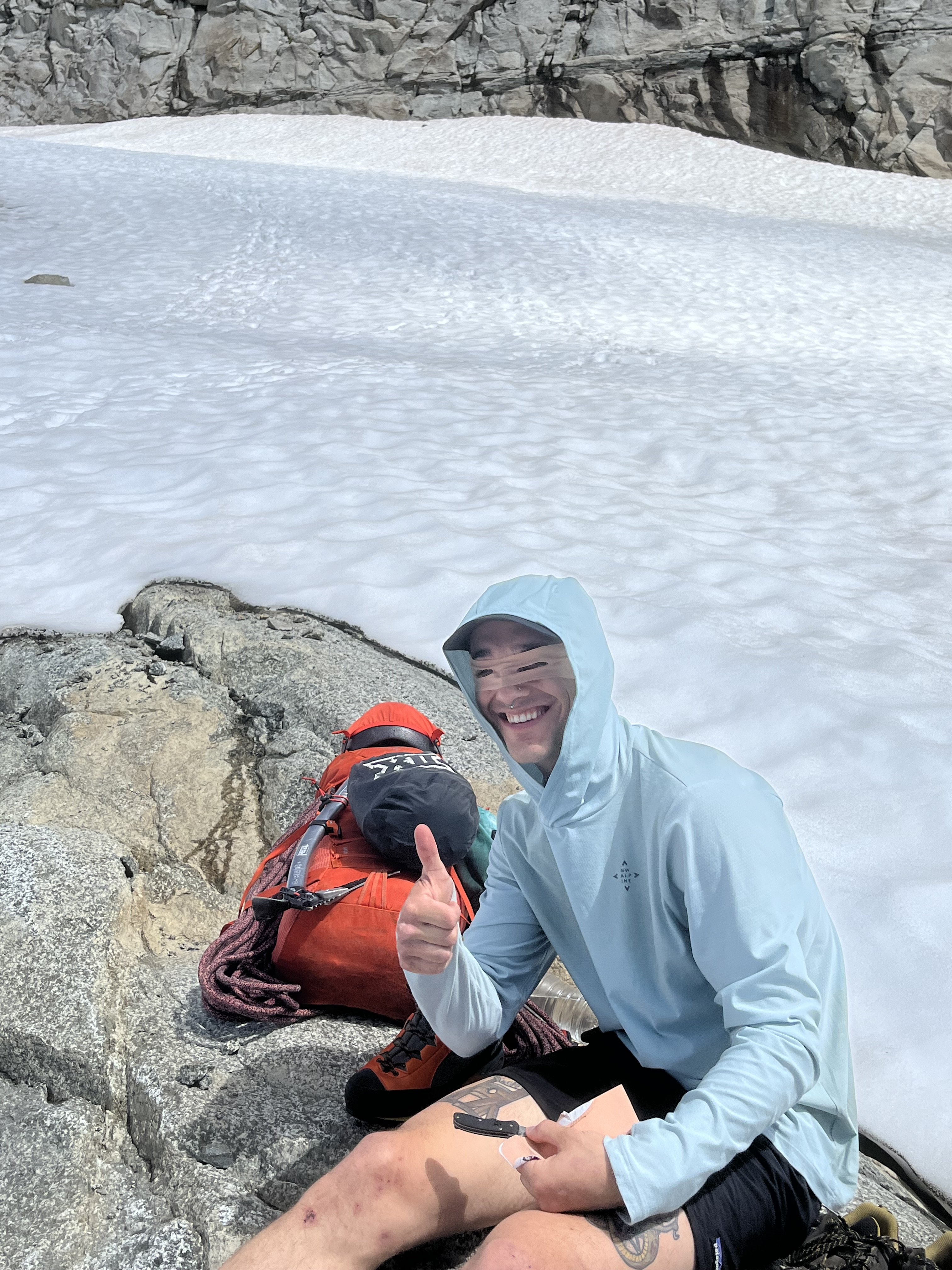
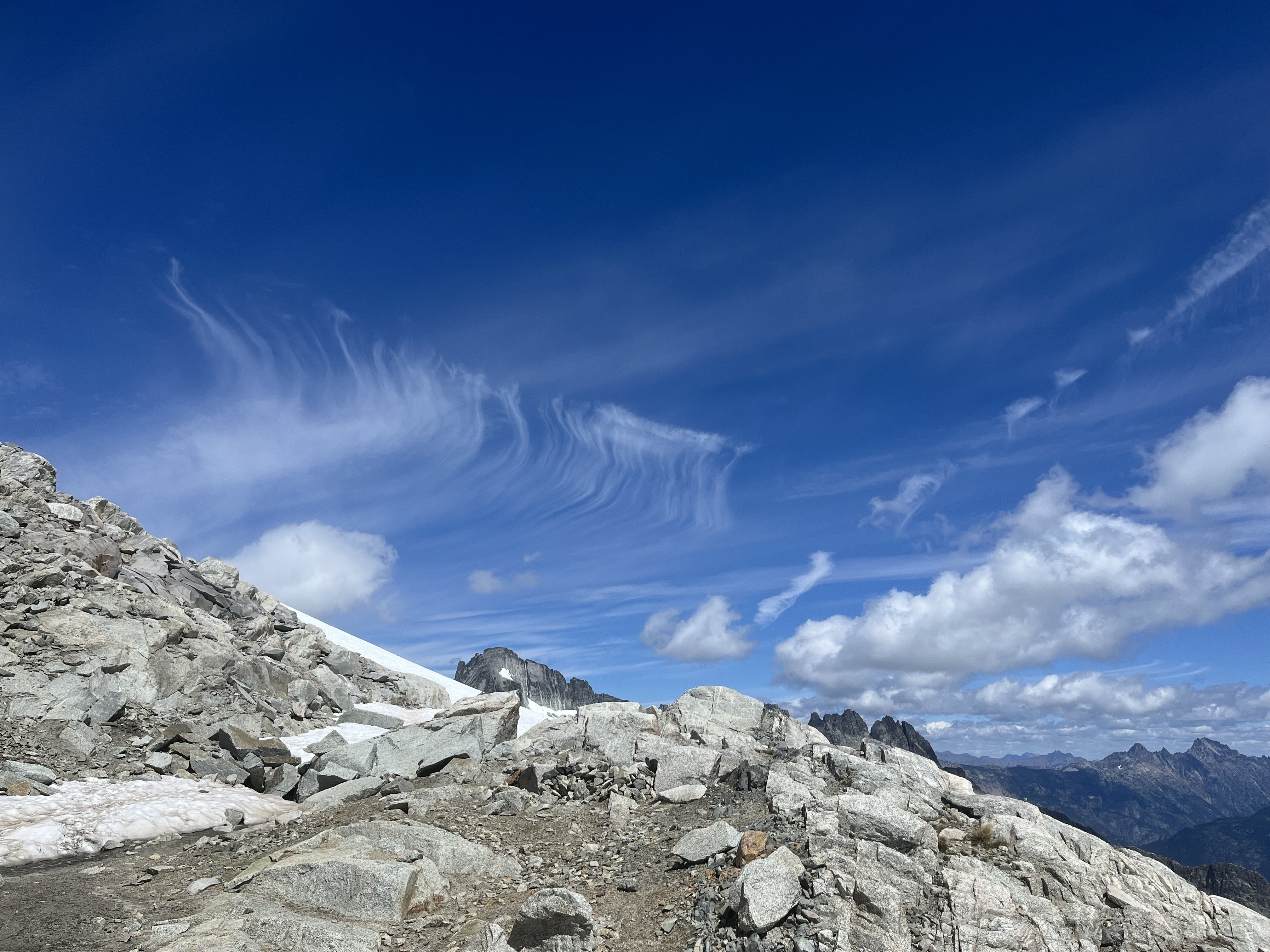

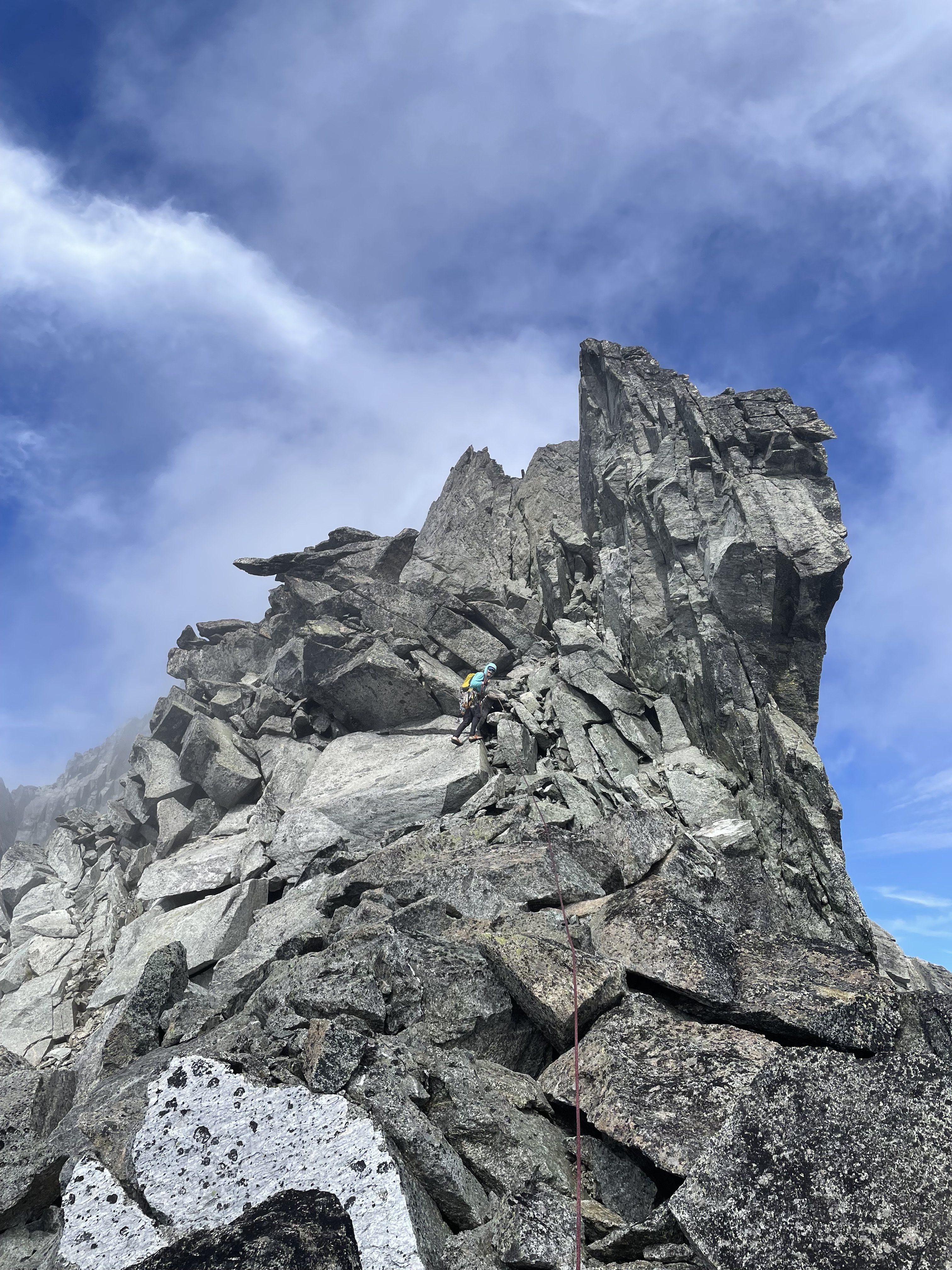
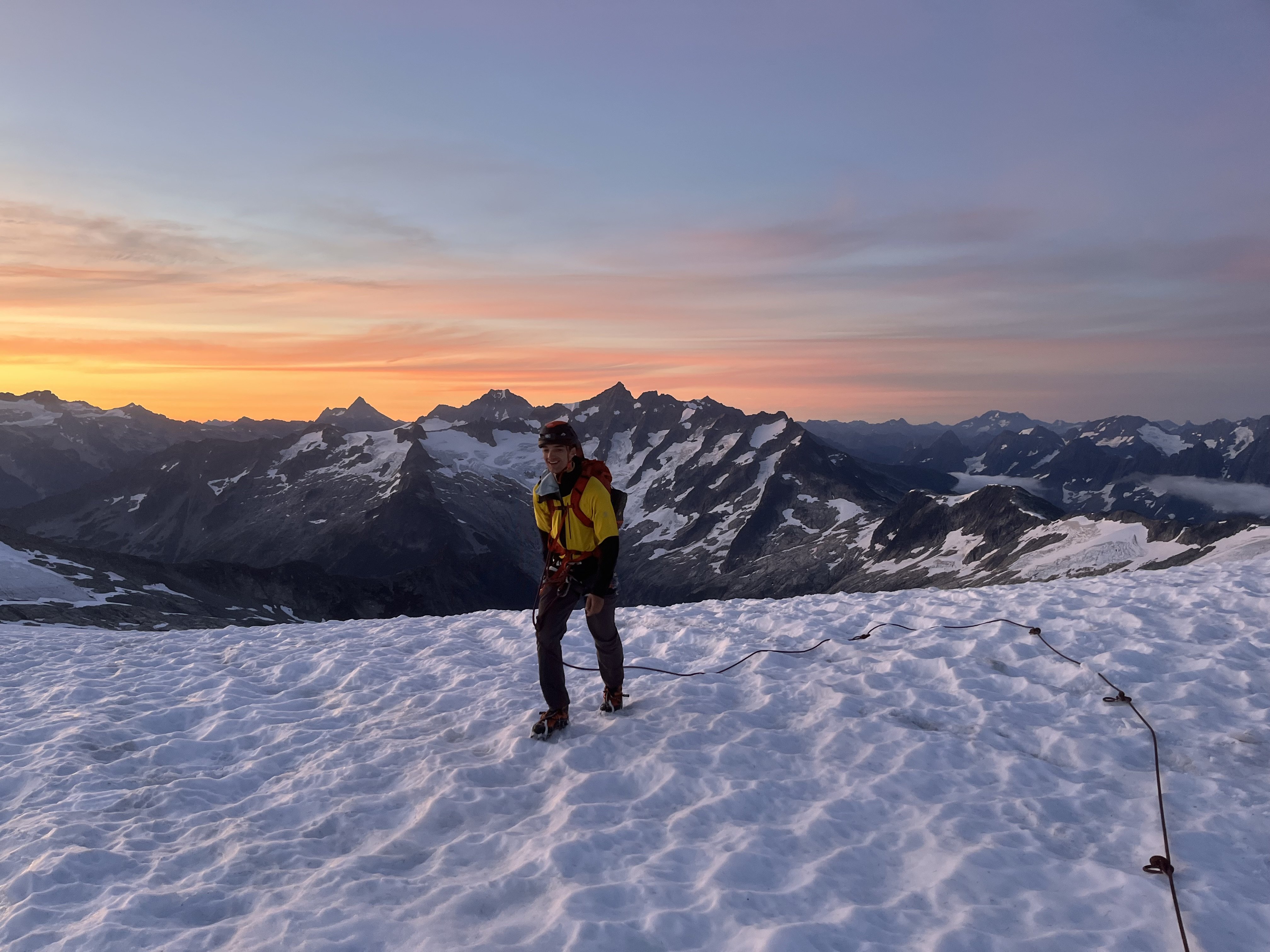
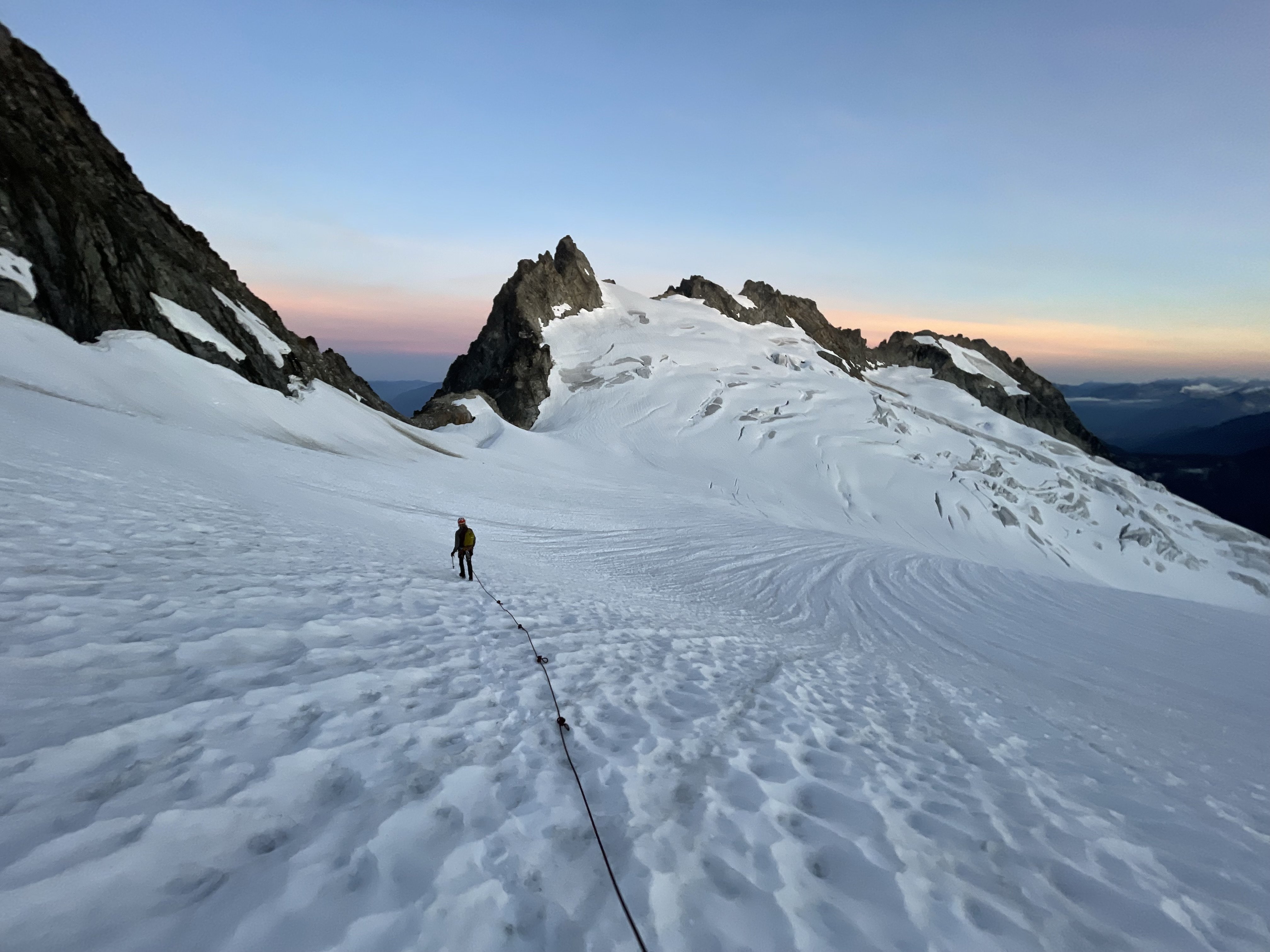


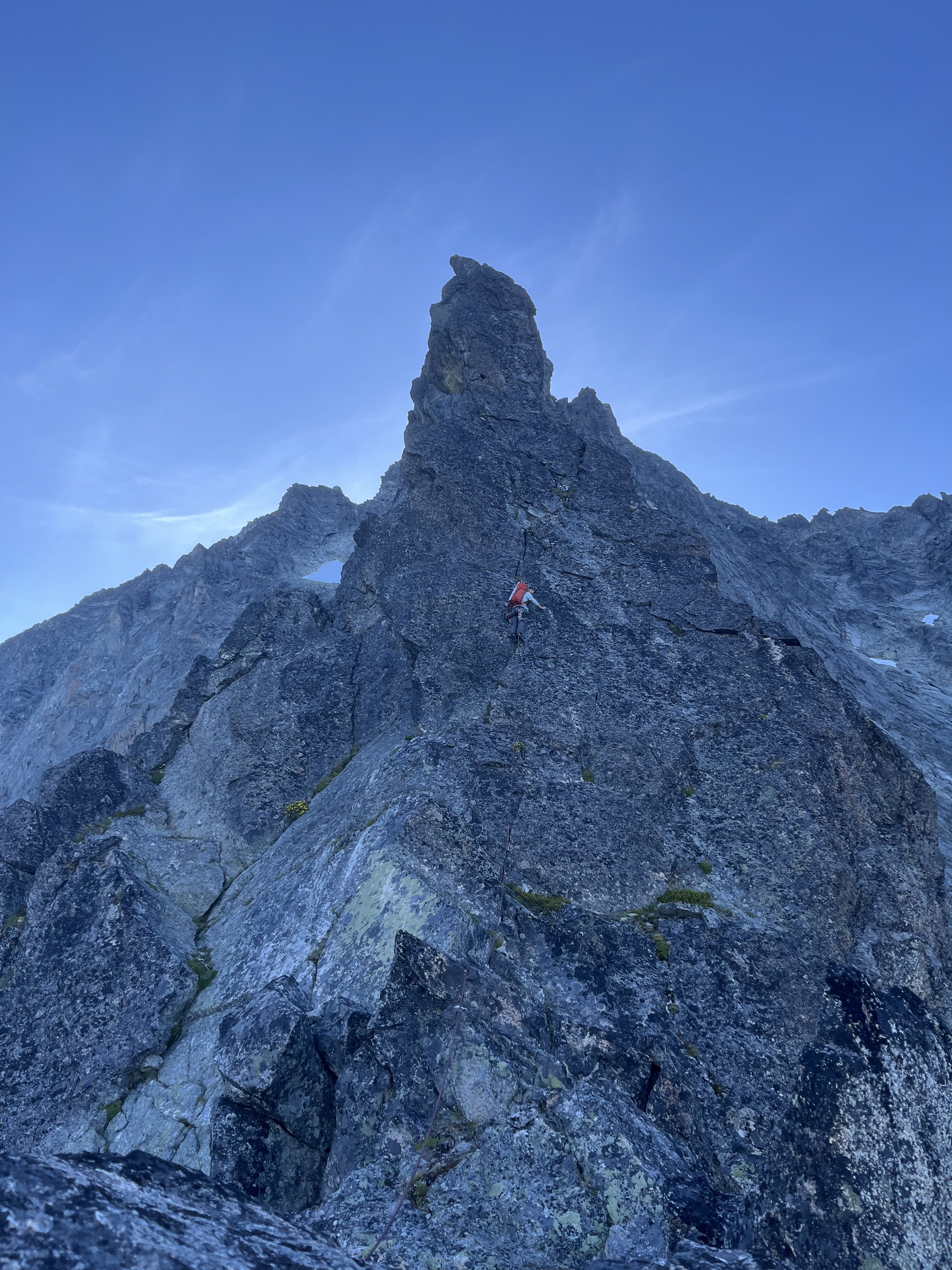


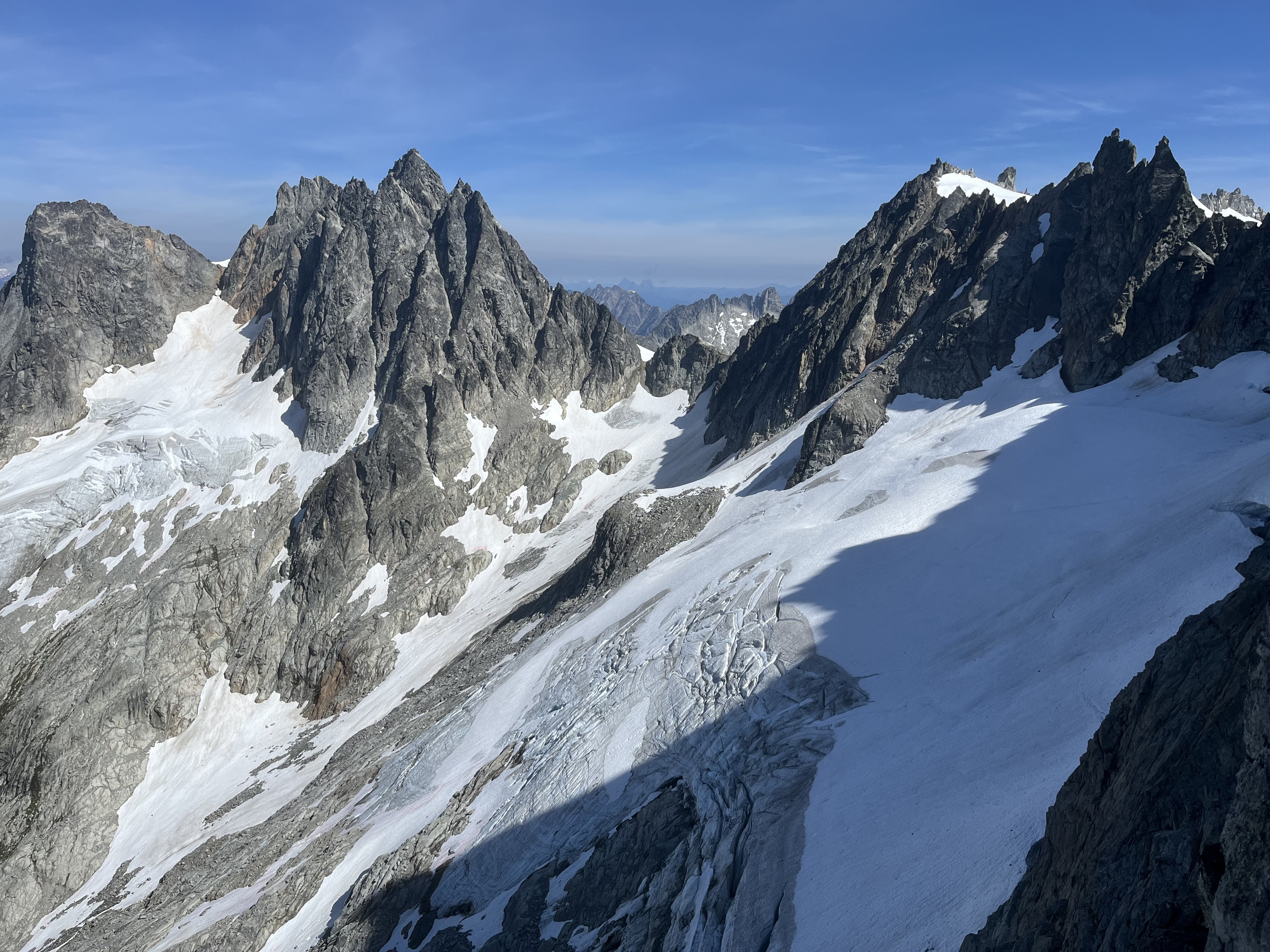
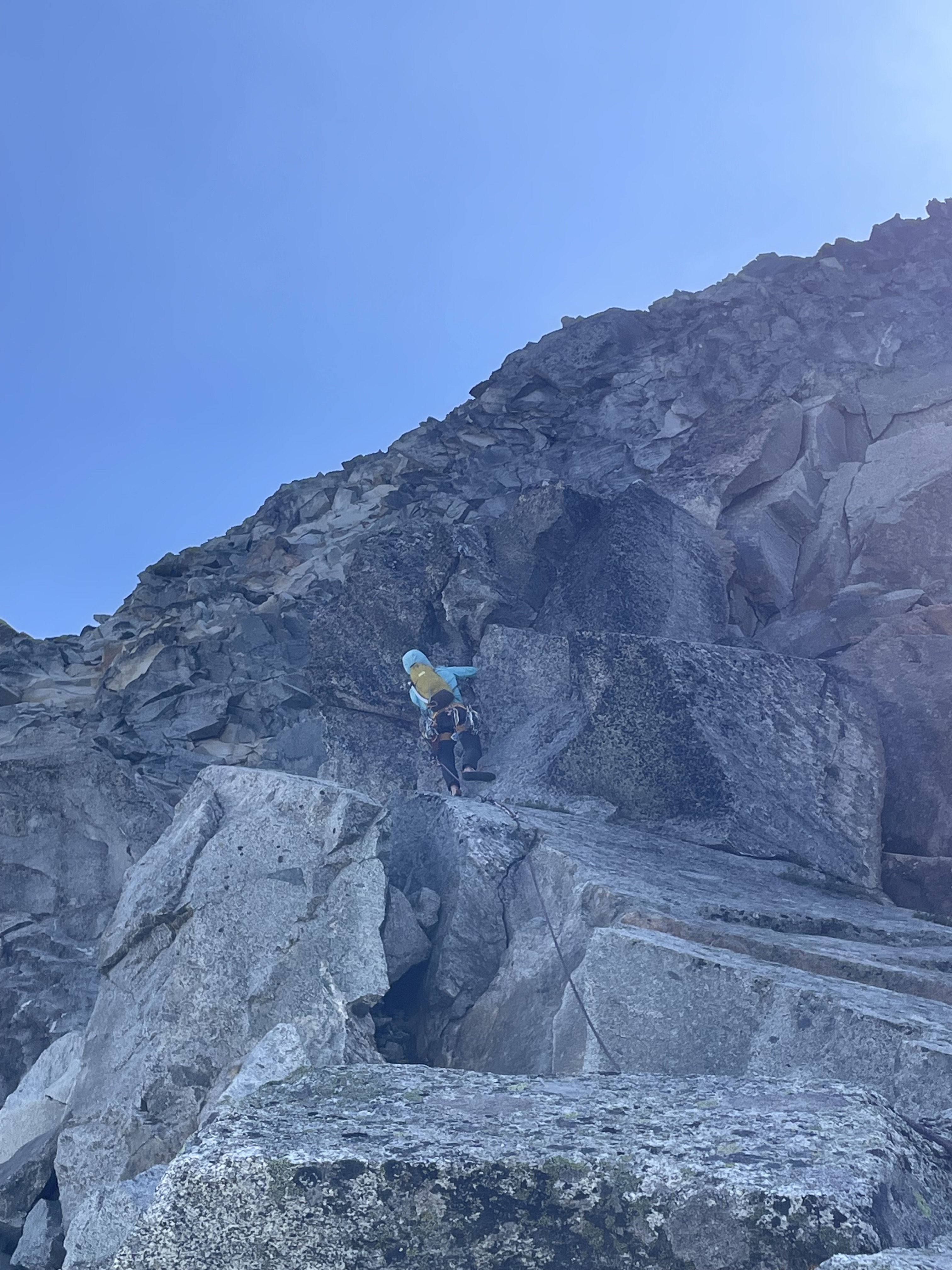
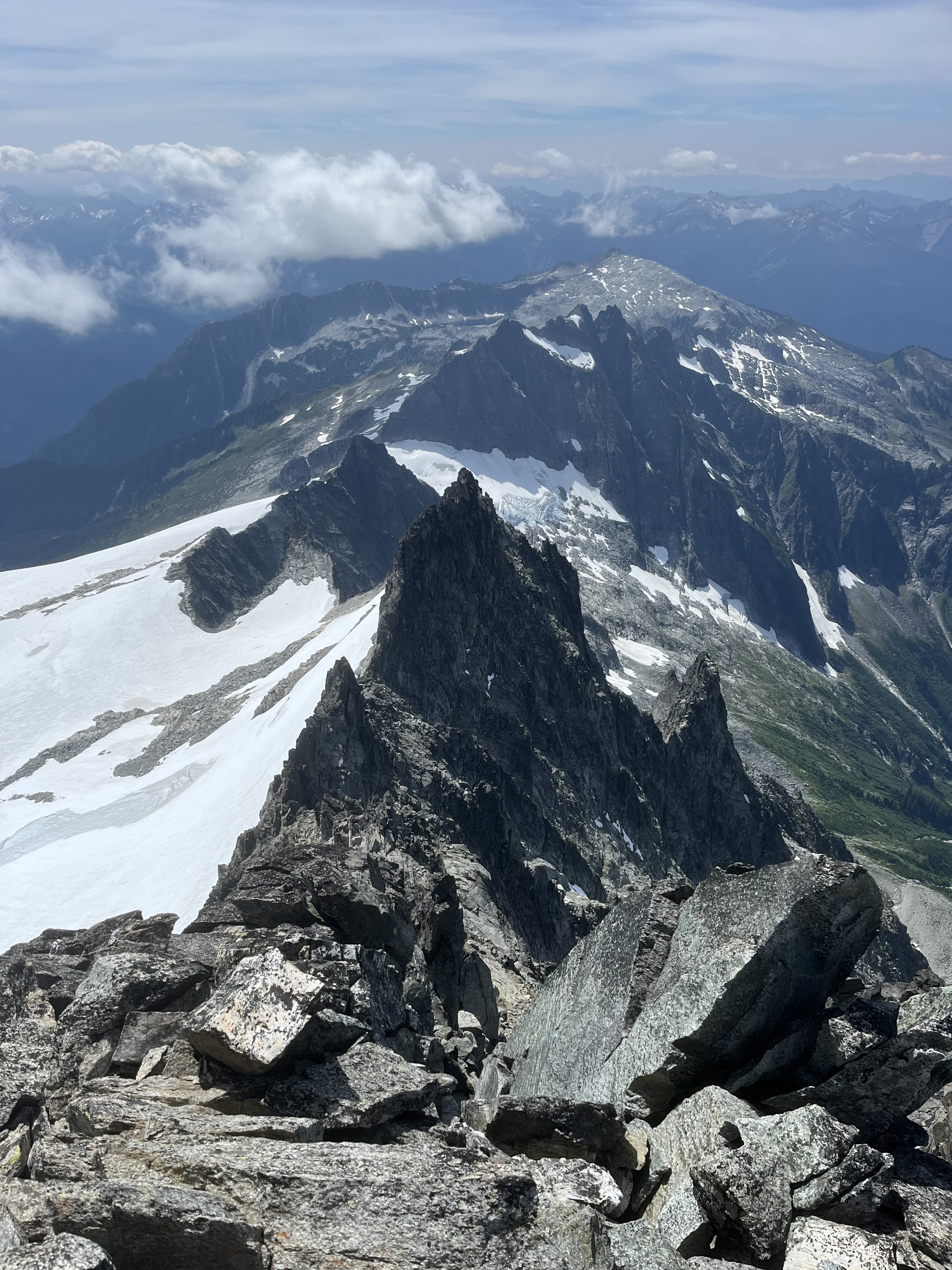

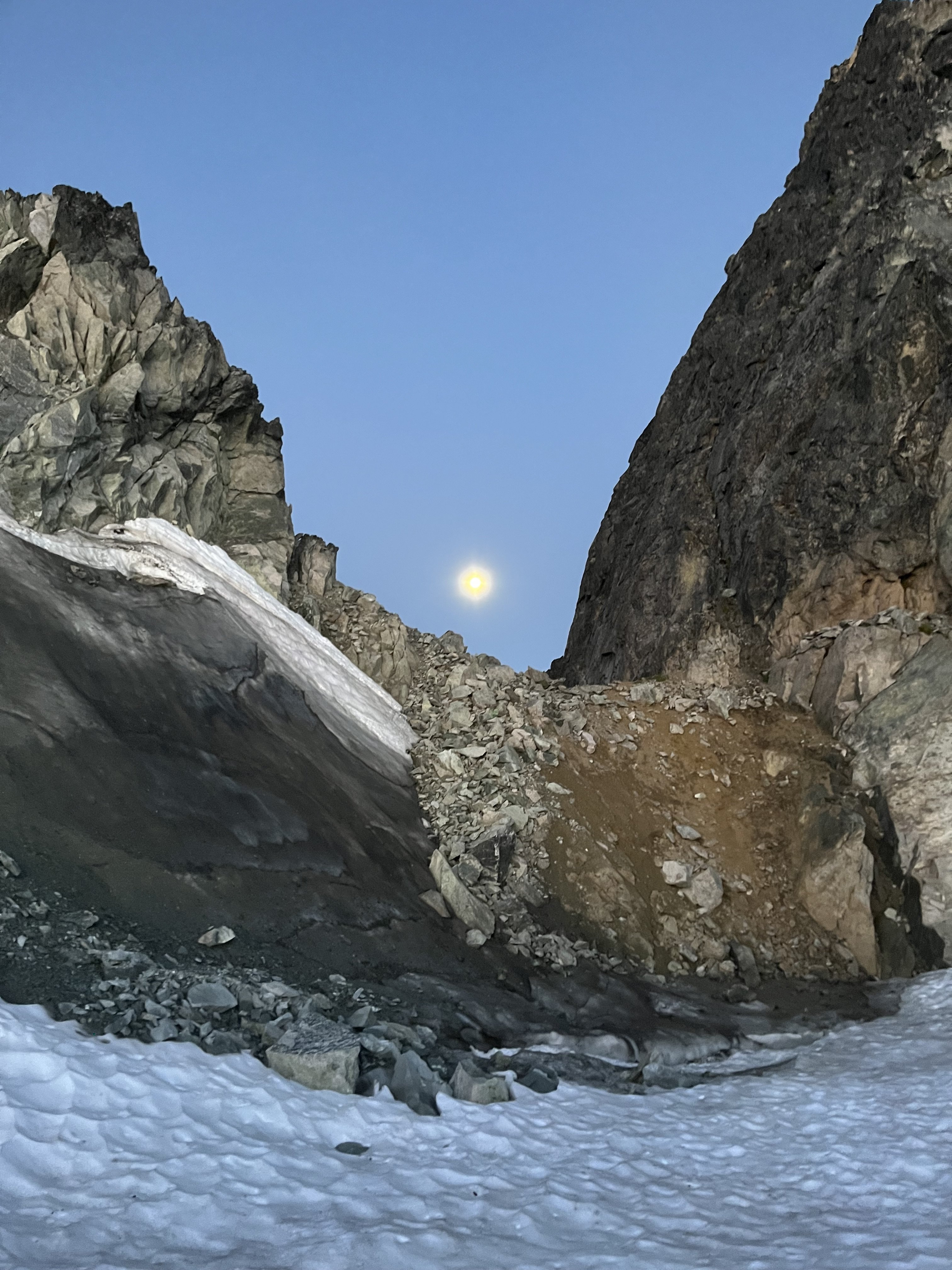

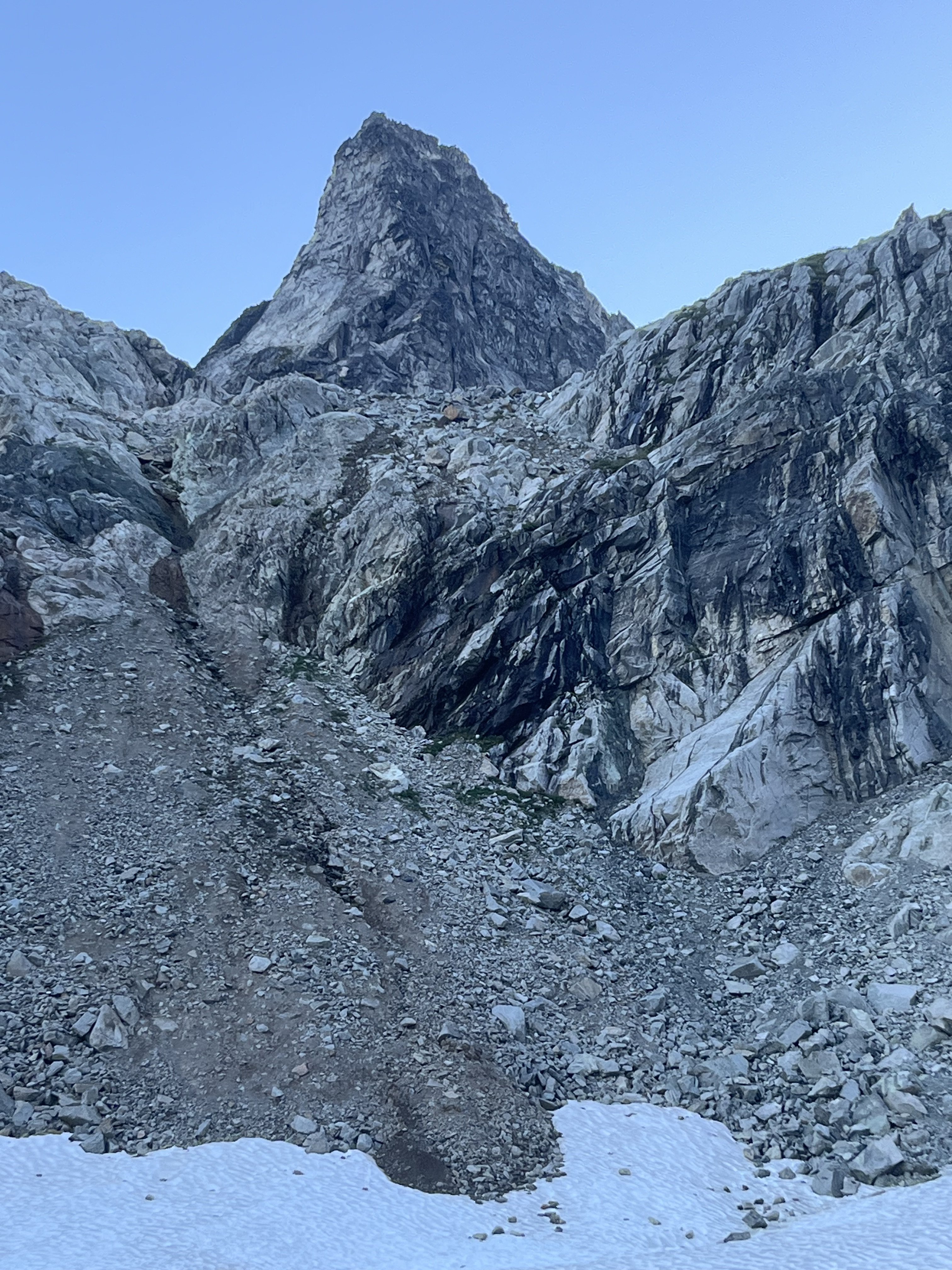
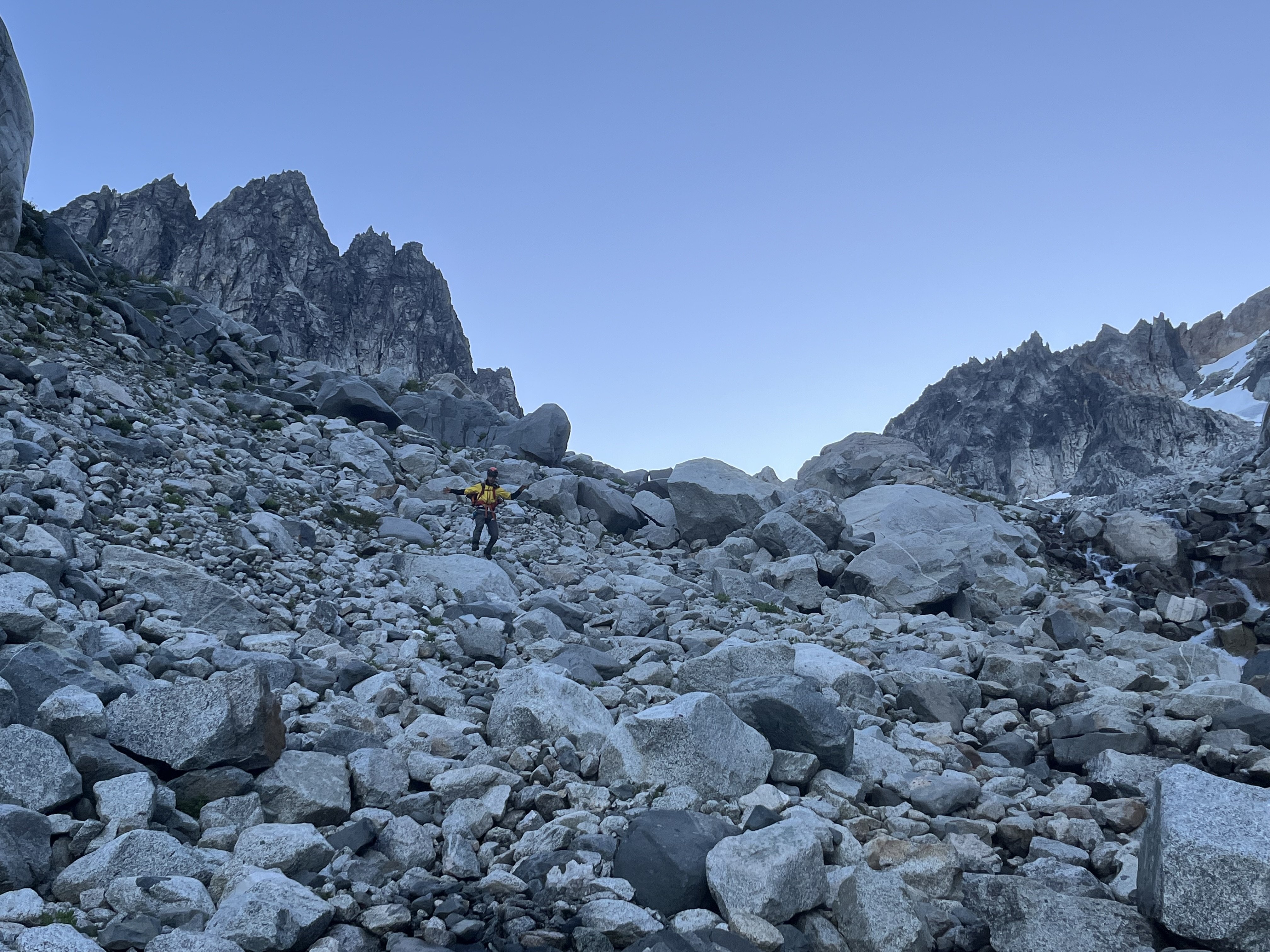


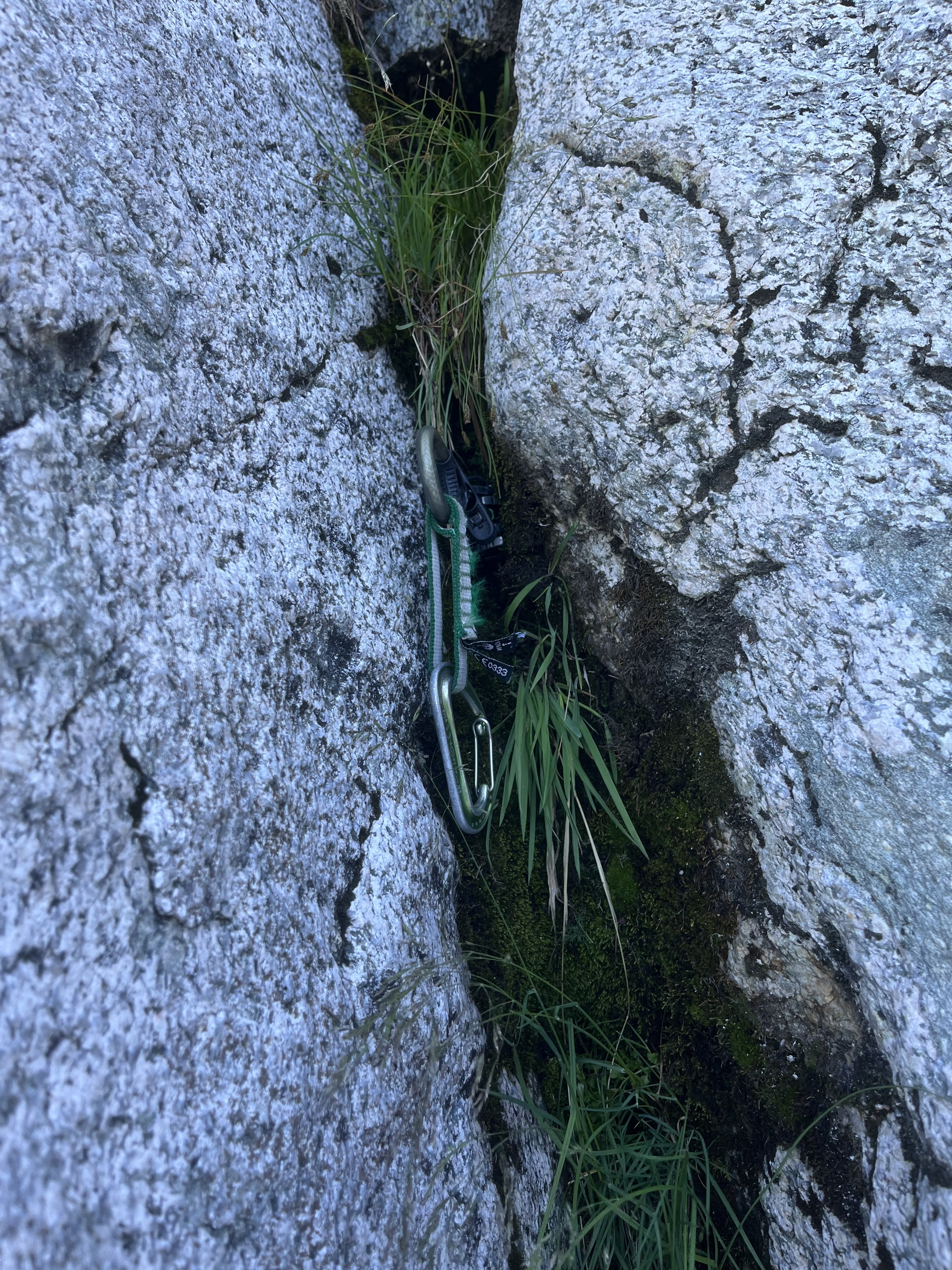

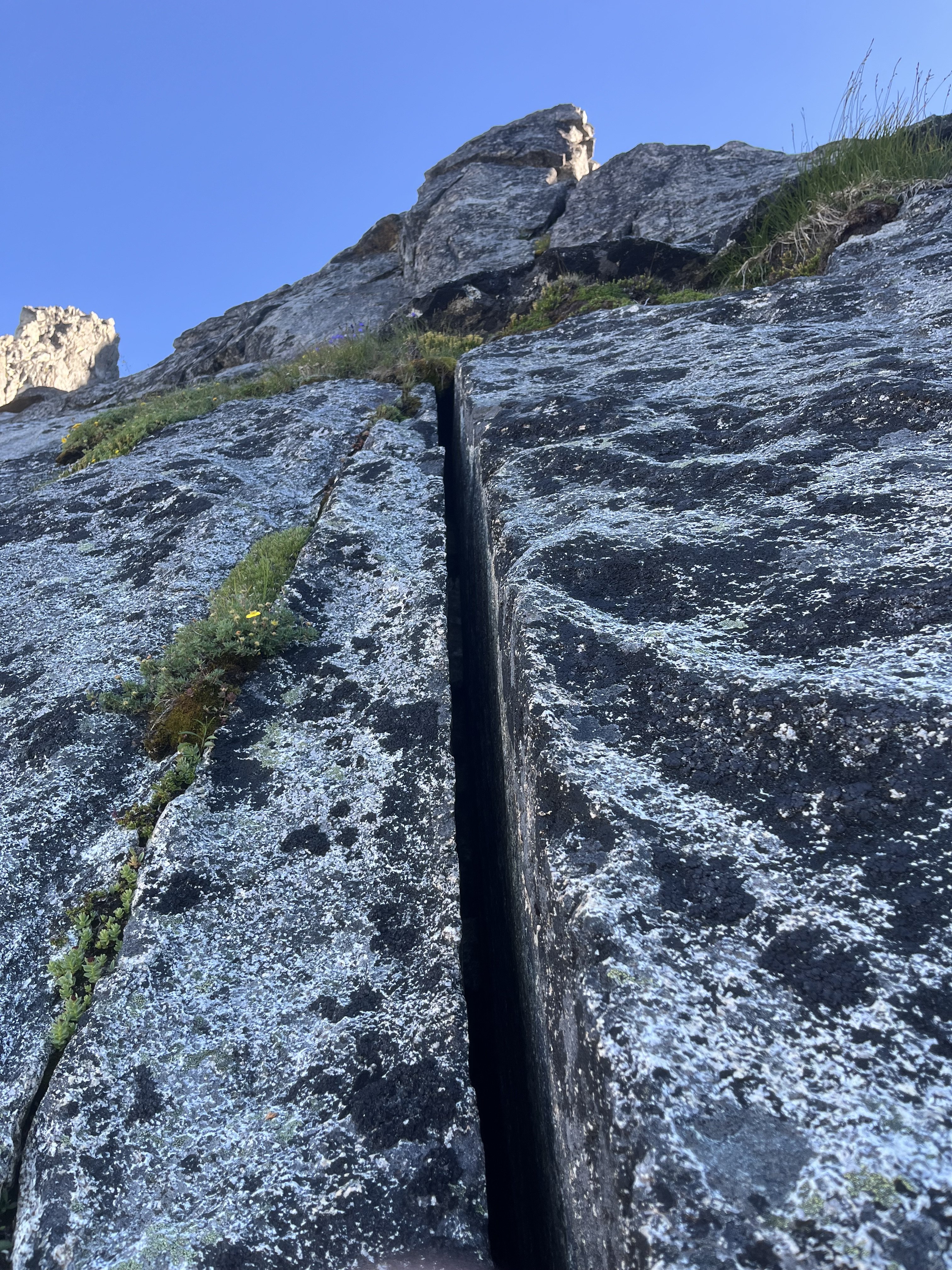
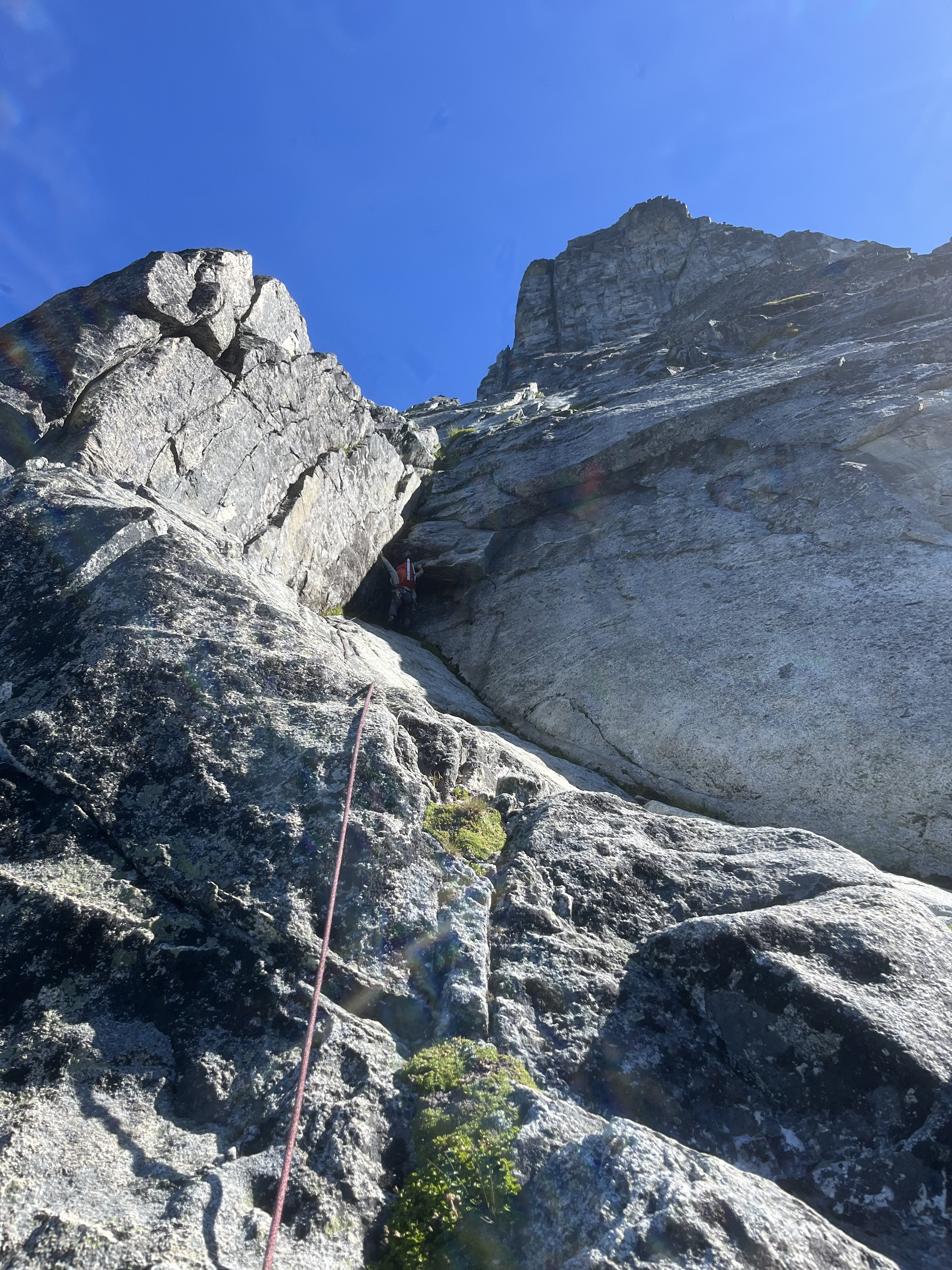
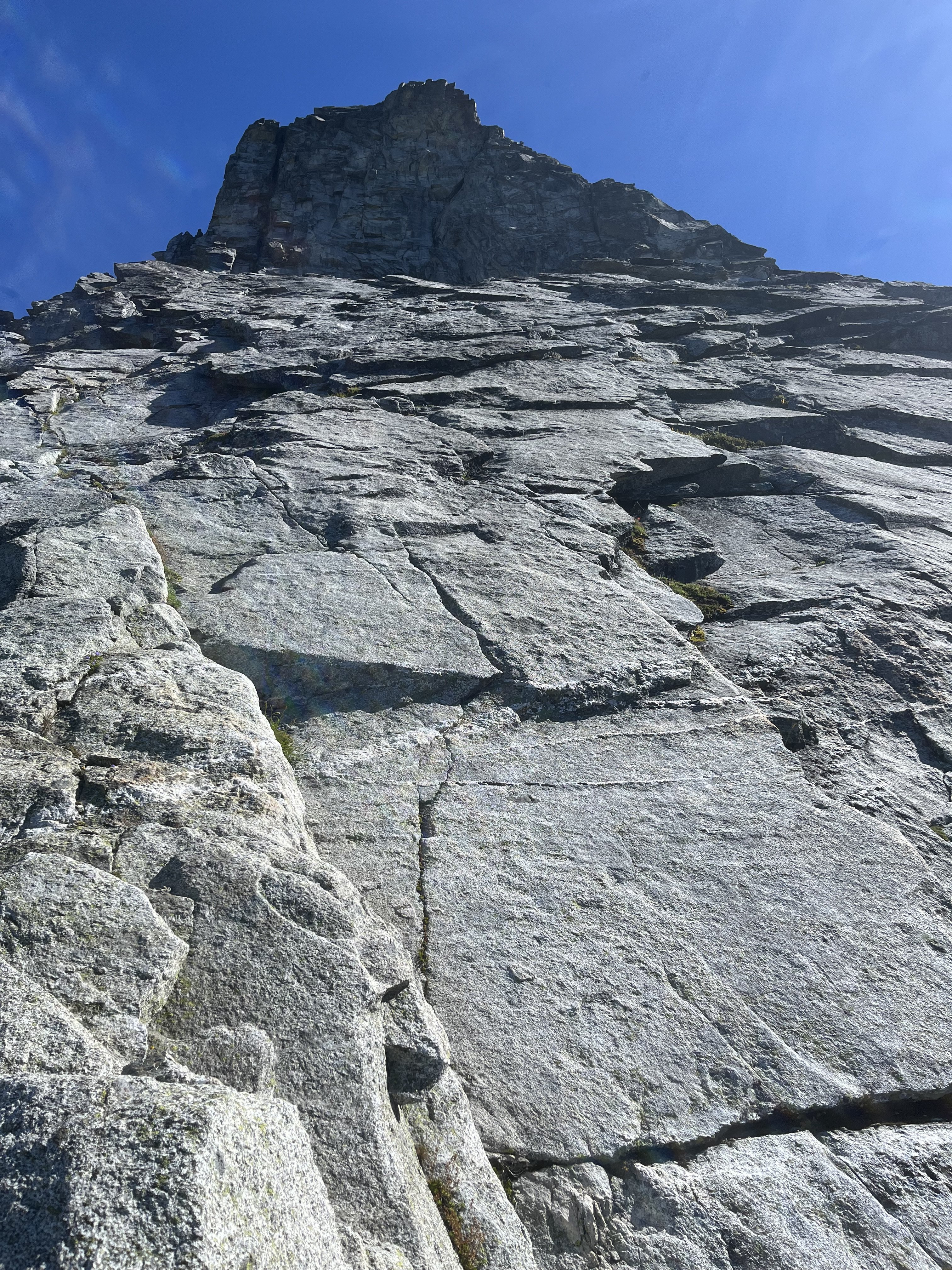
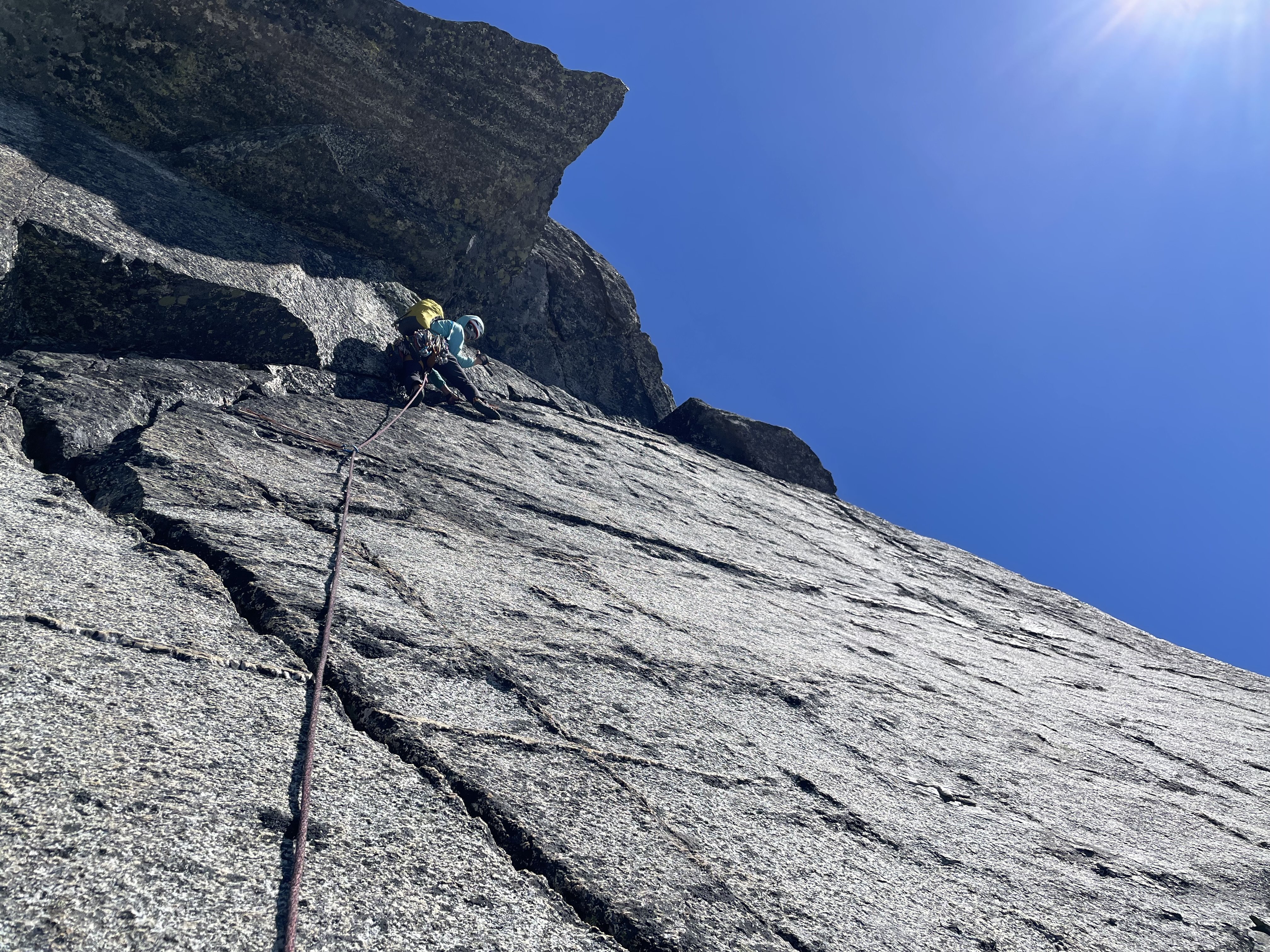
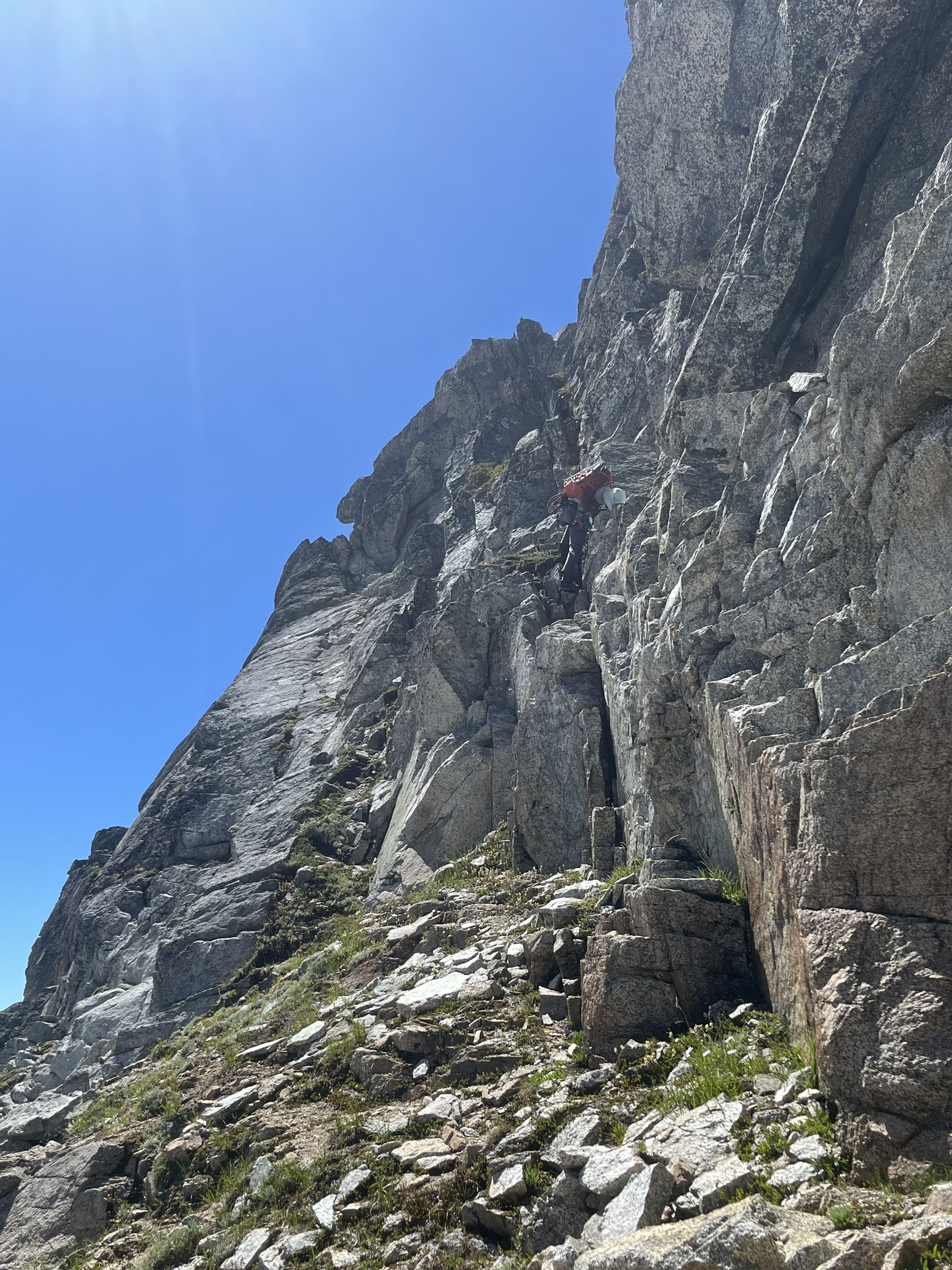
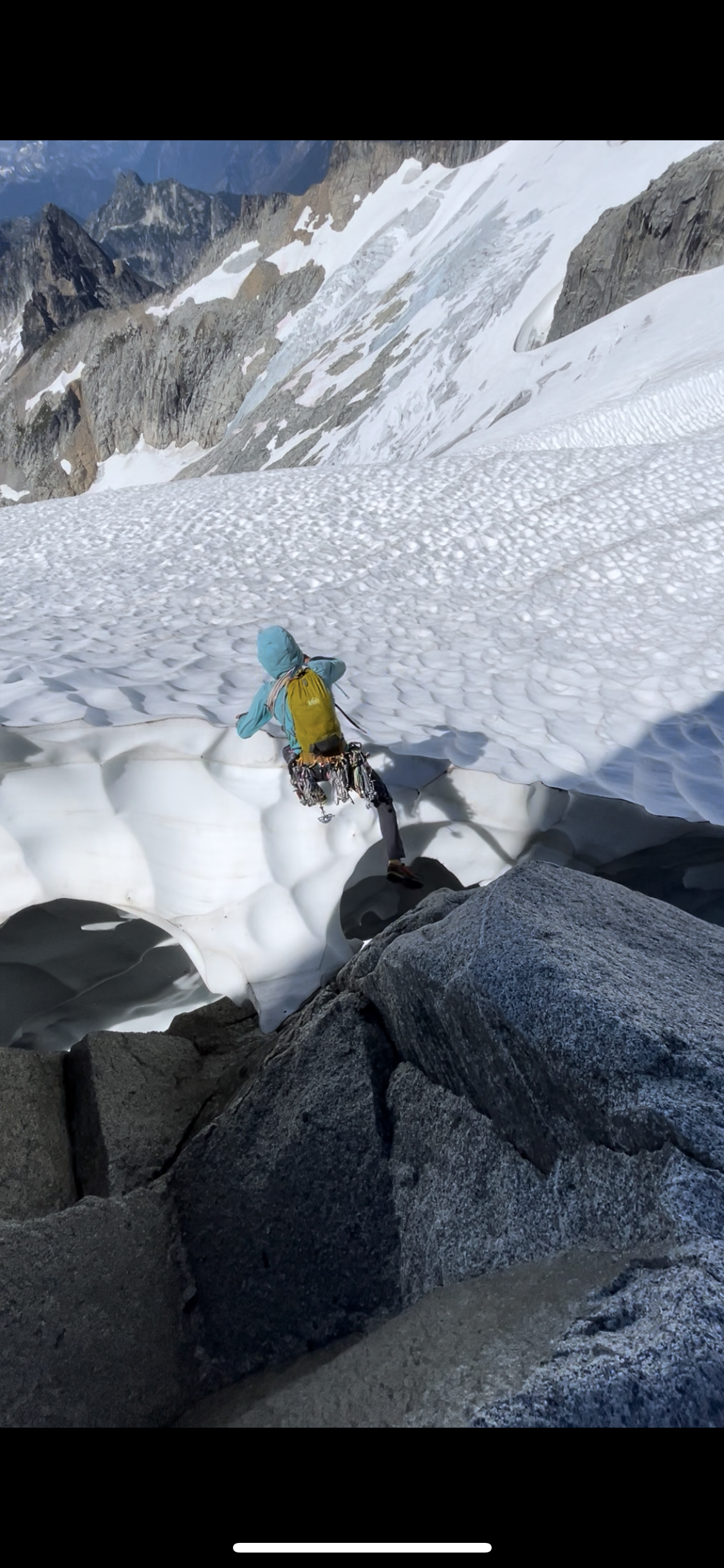
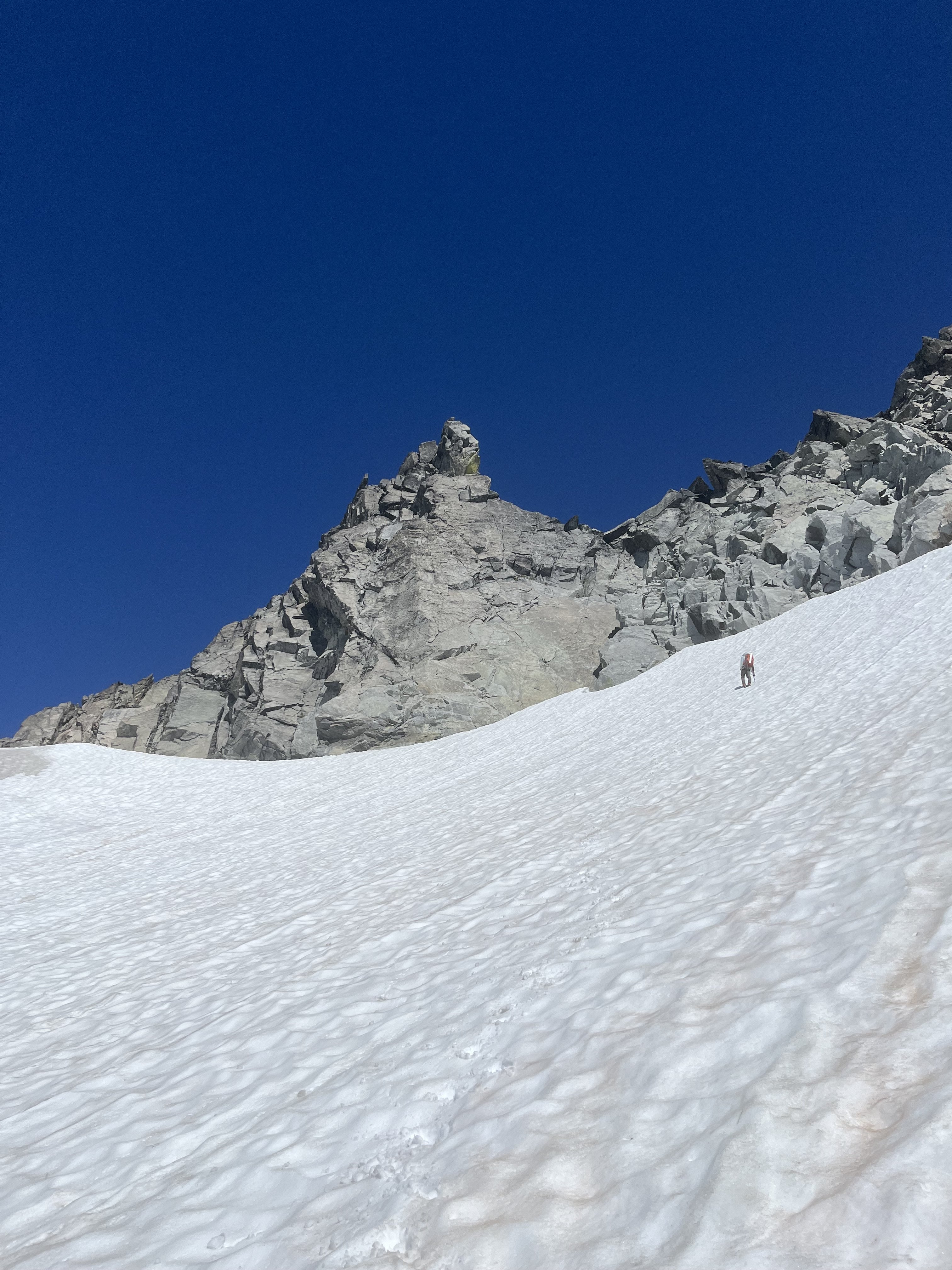

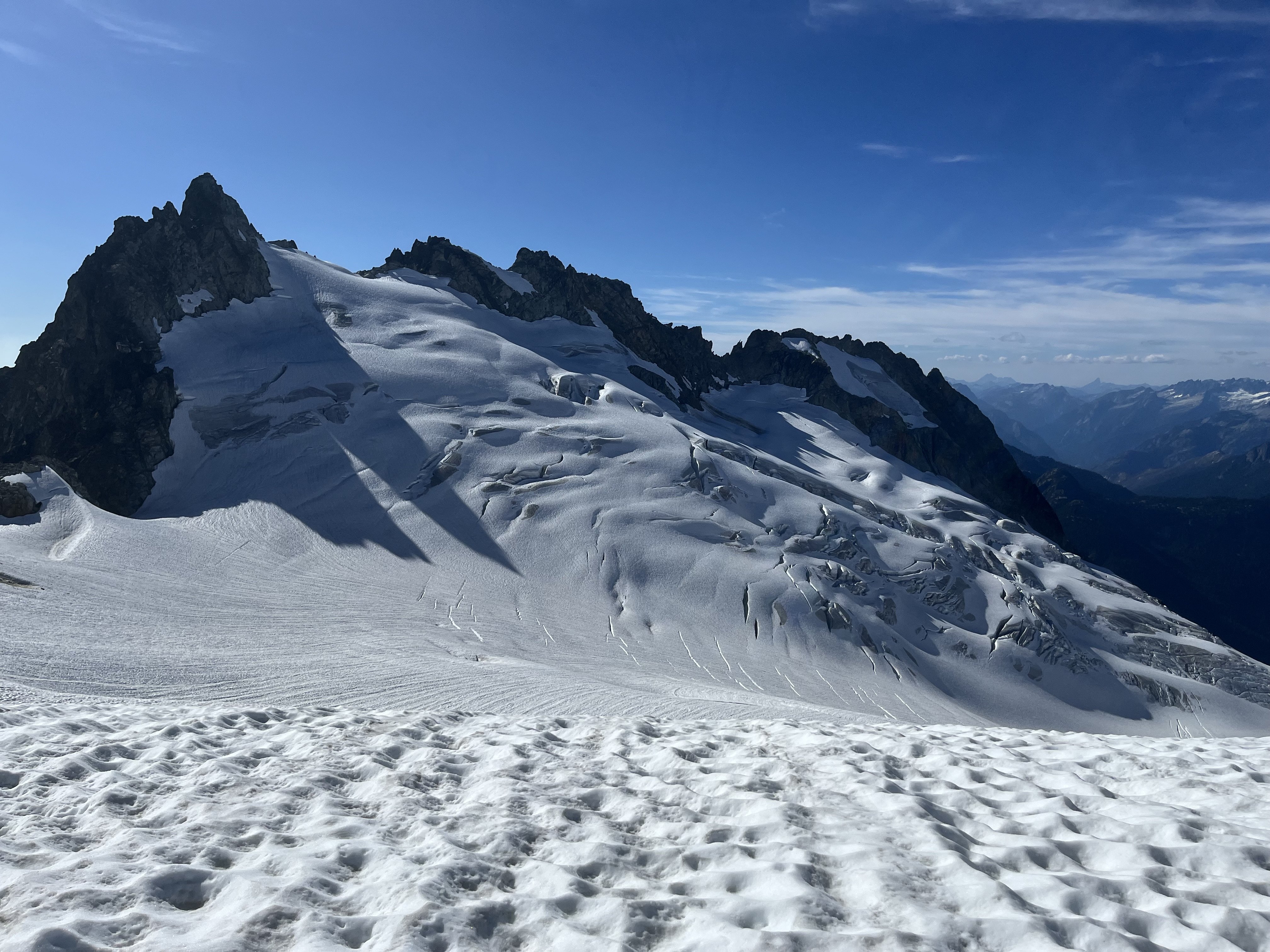
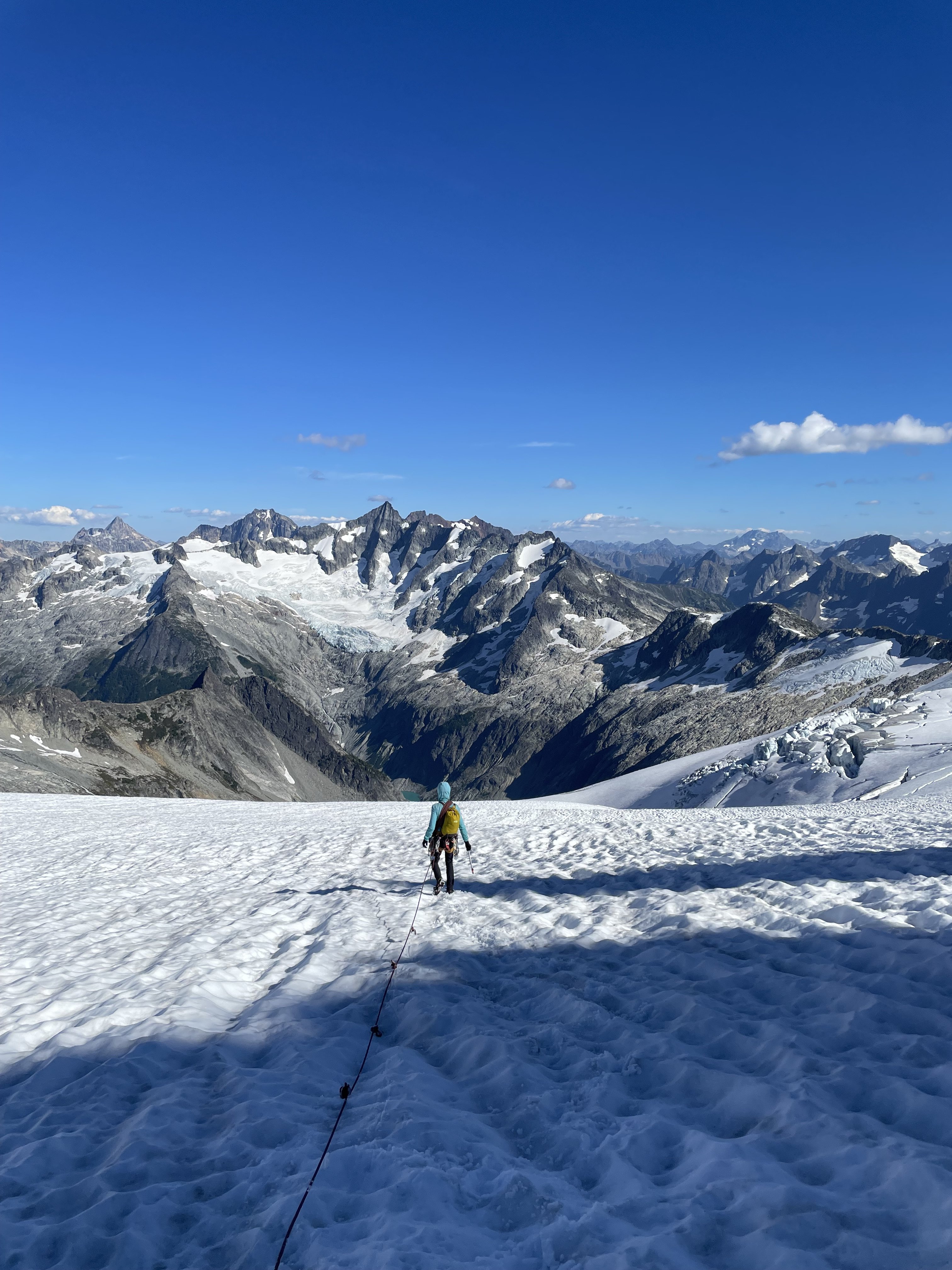
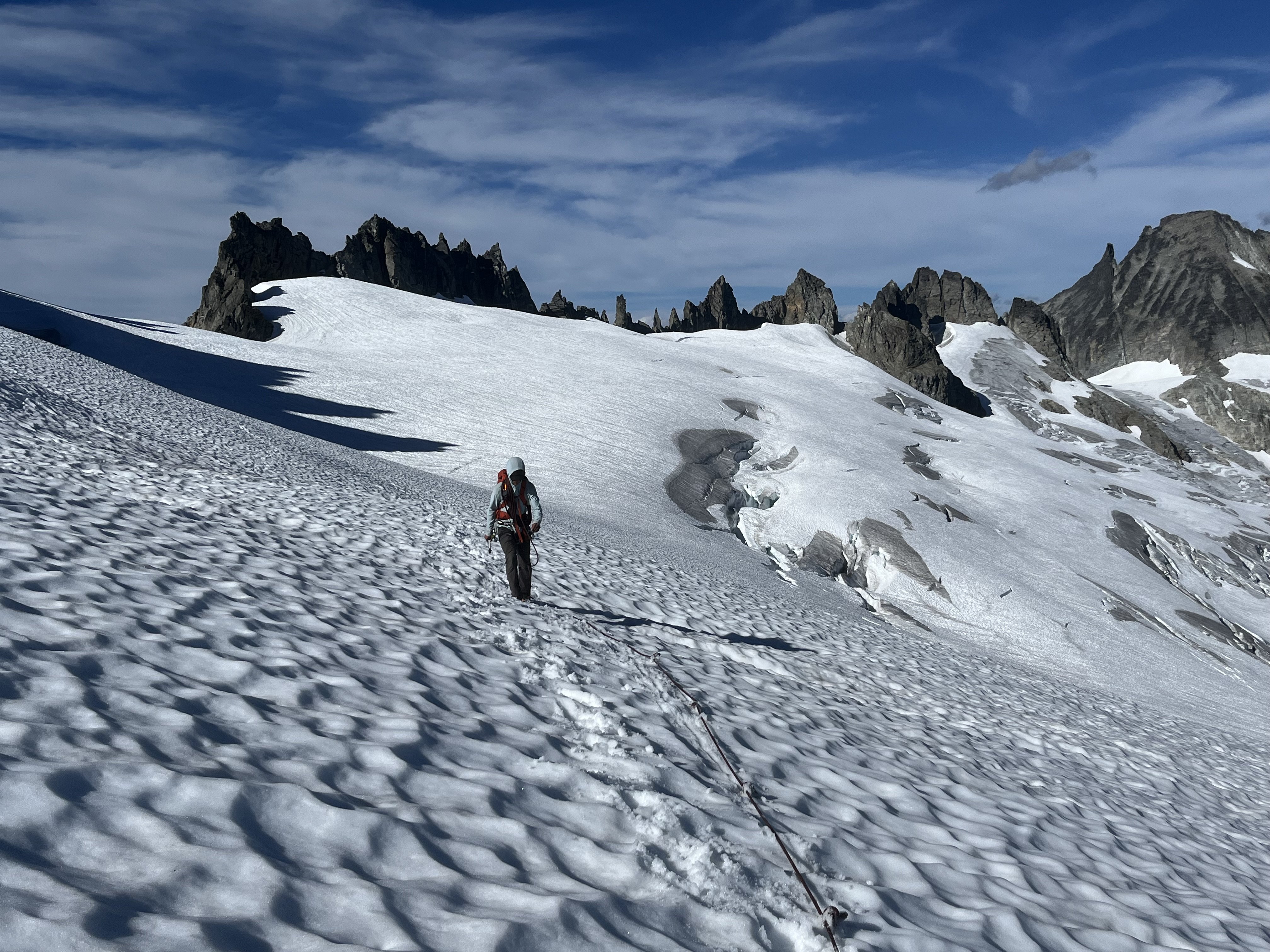
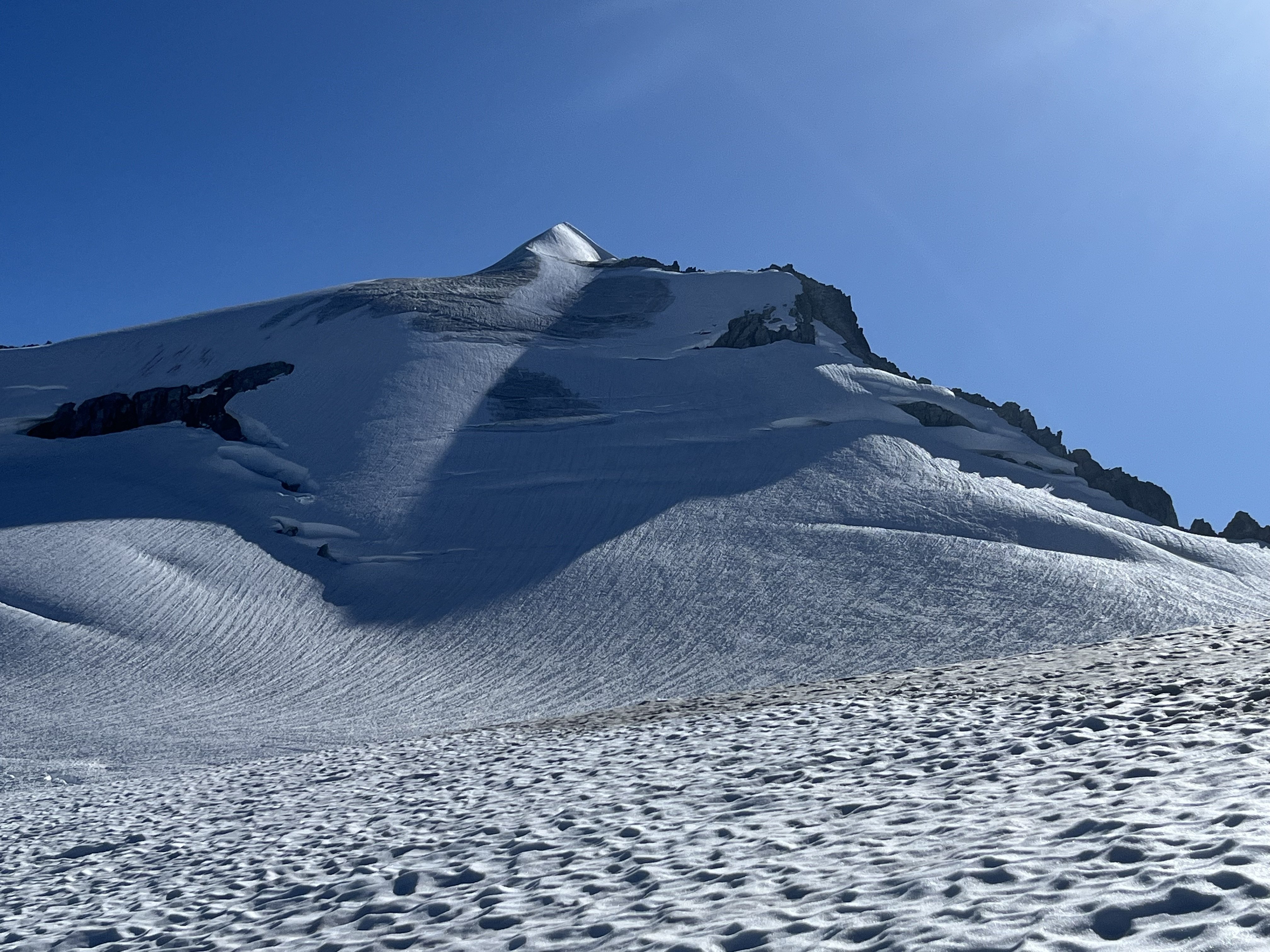
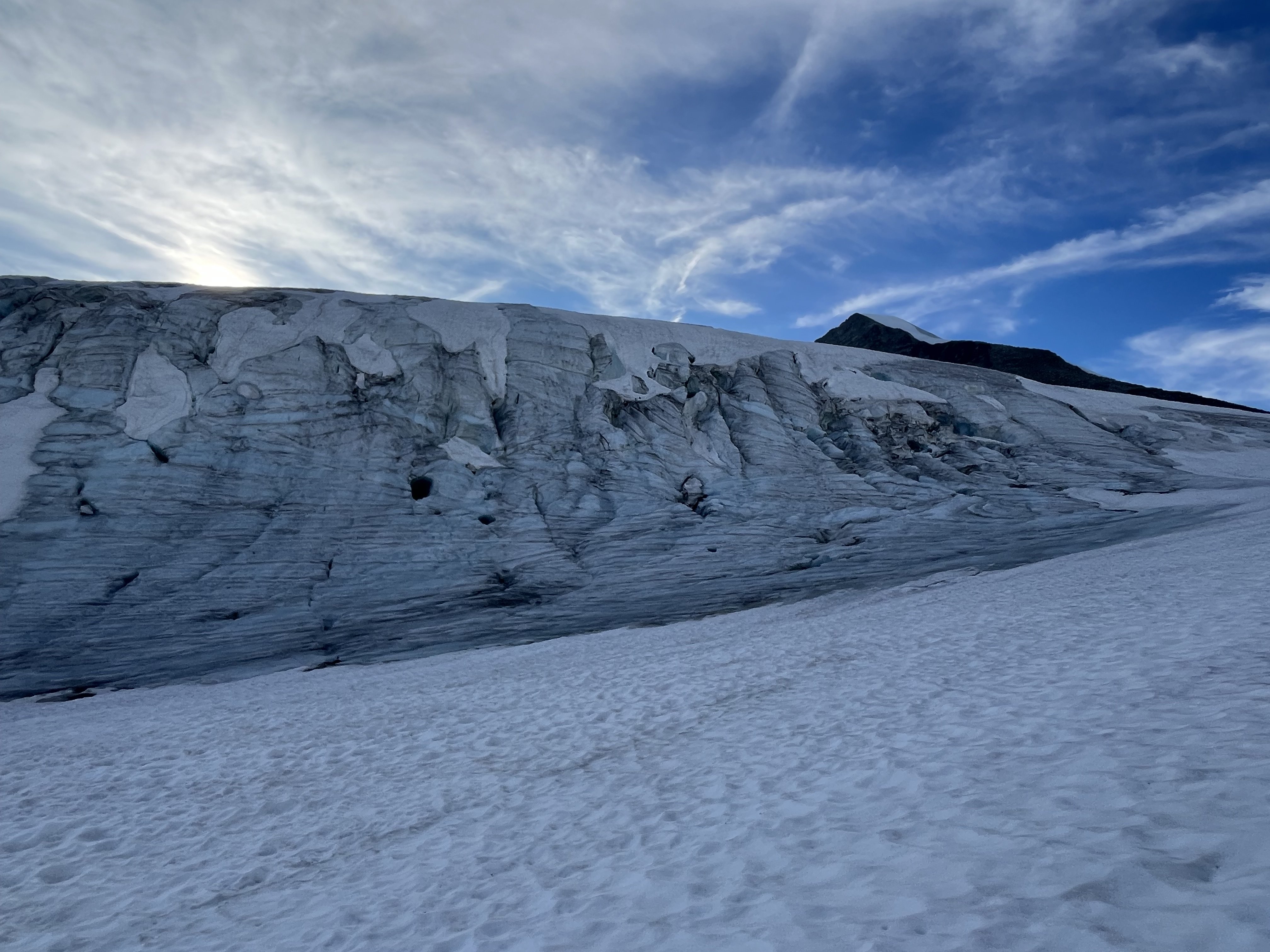

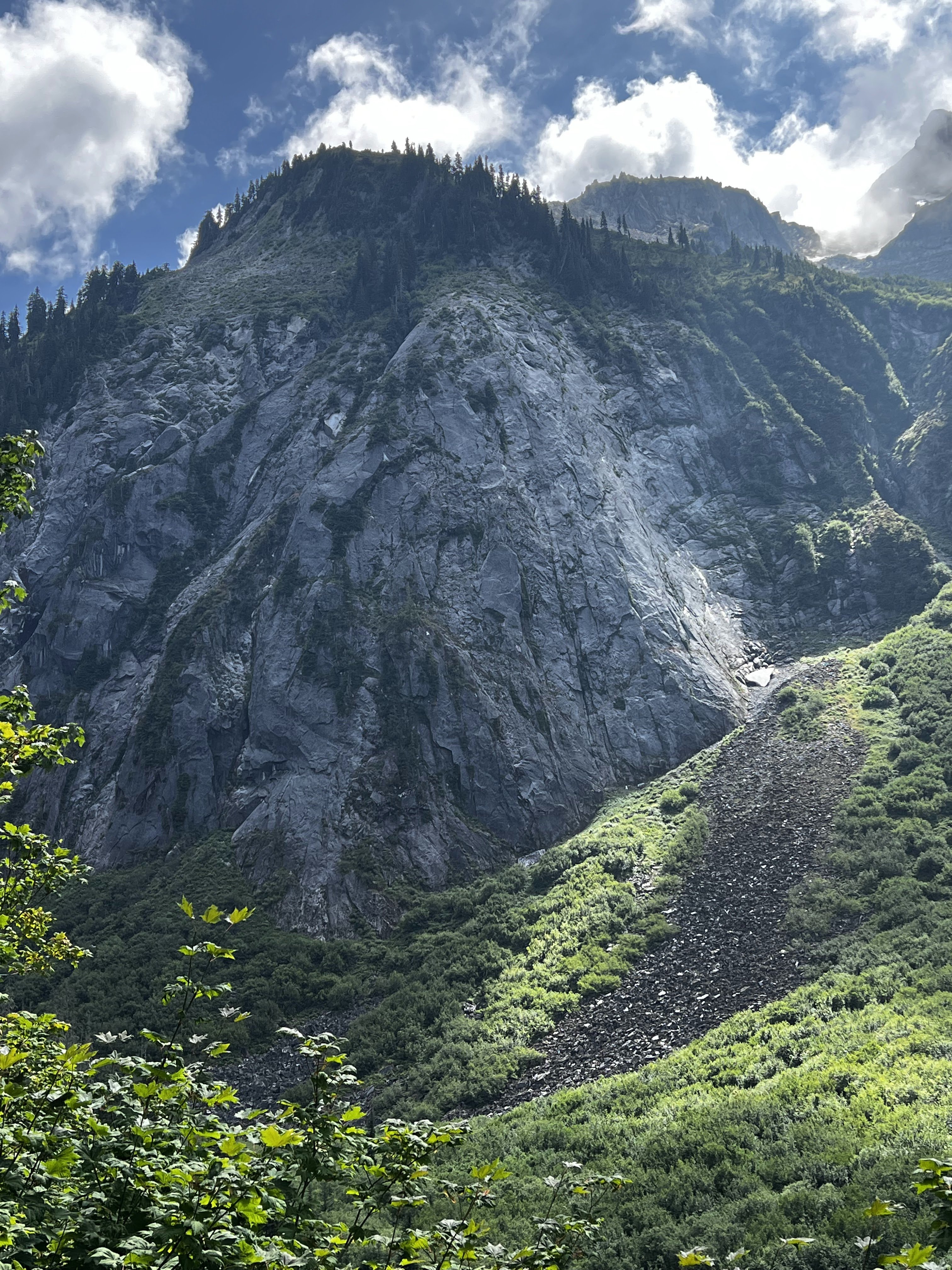

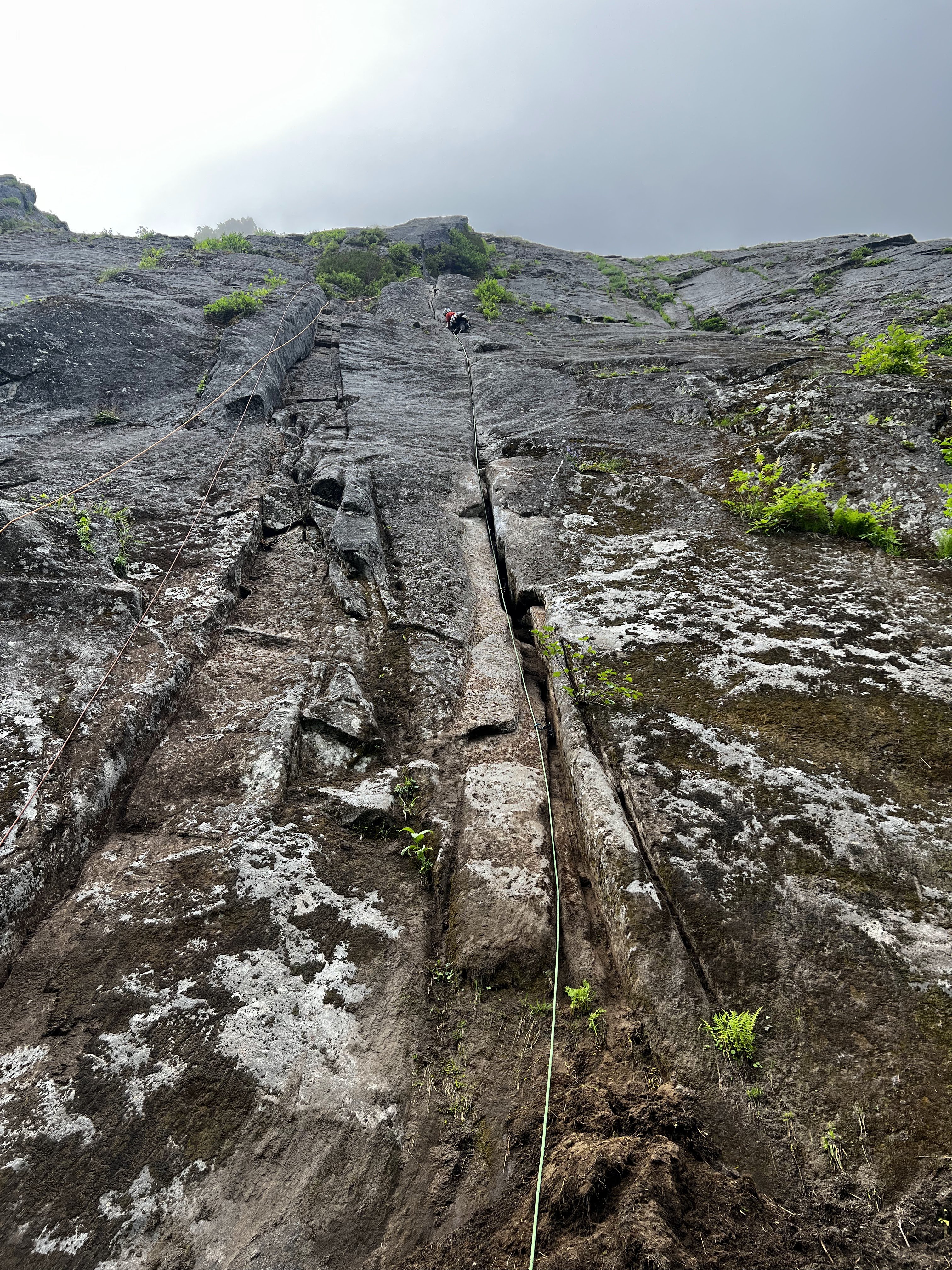
.jpg.2b582877bdbee4a7e892f3bb36fd185c.jpg)
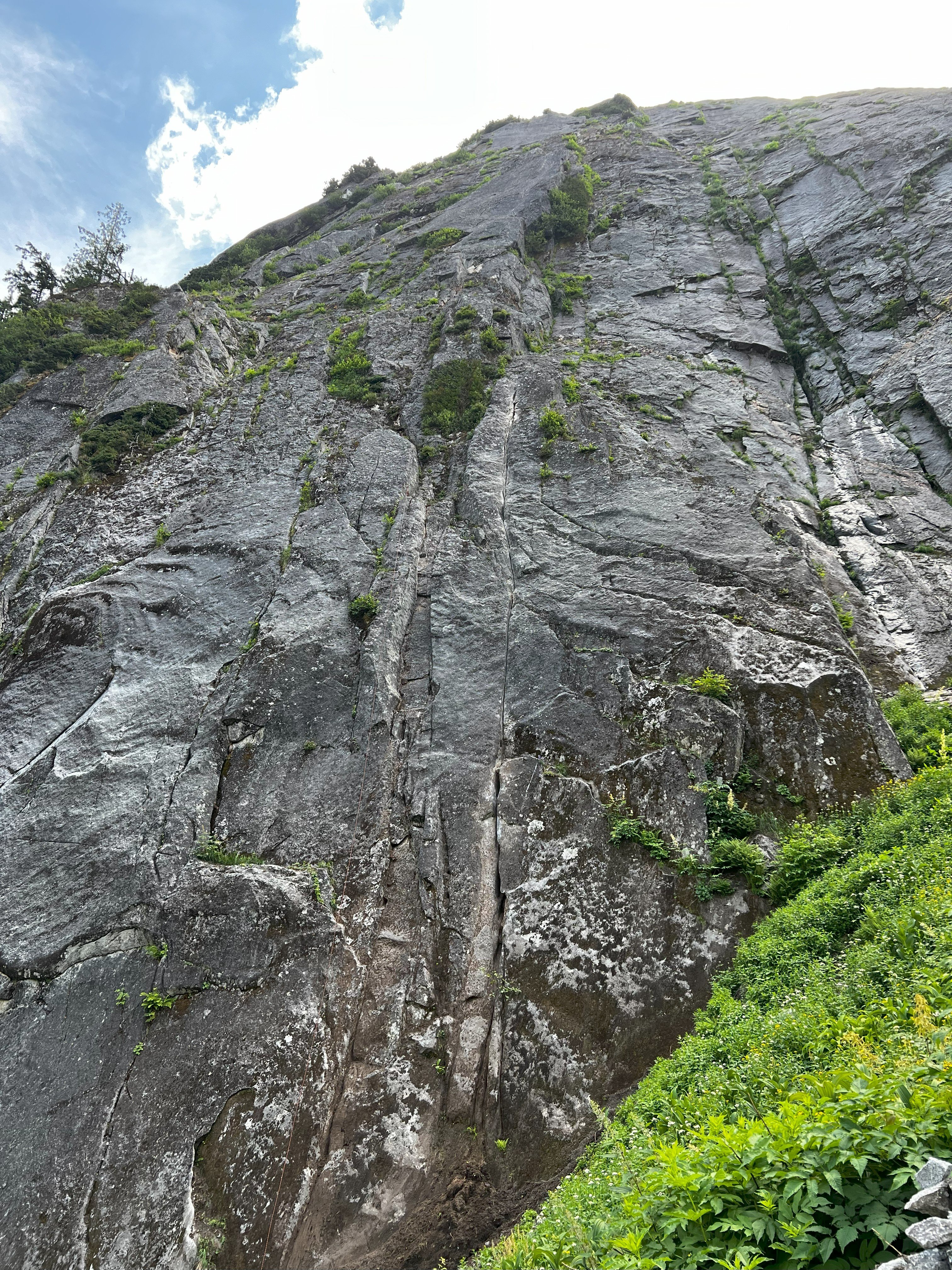
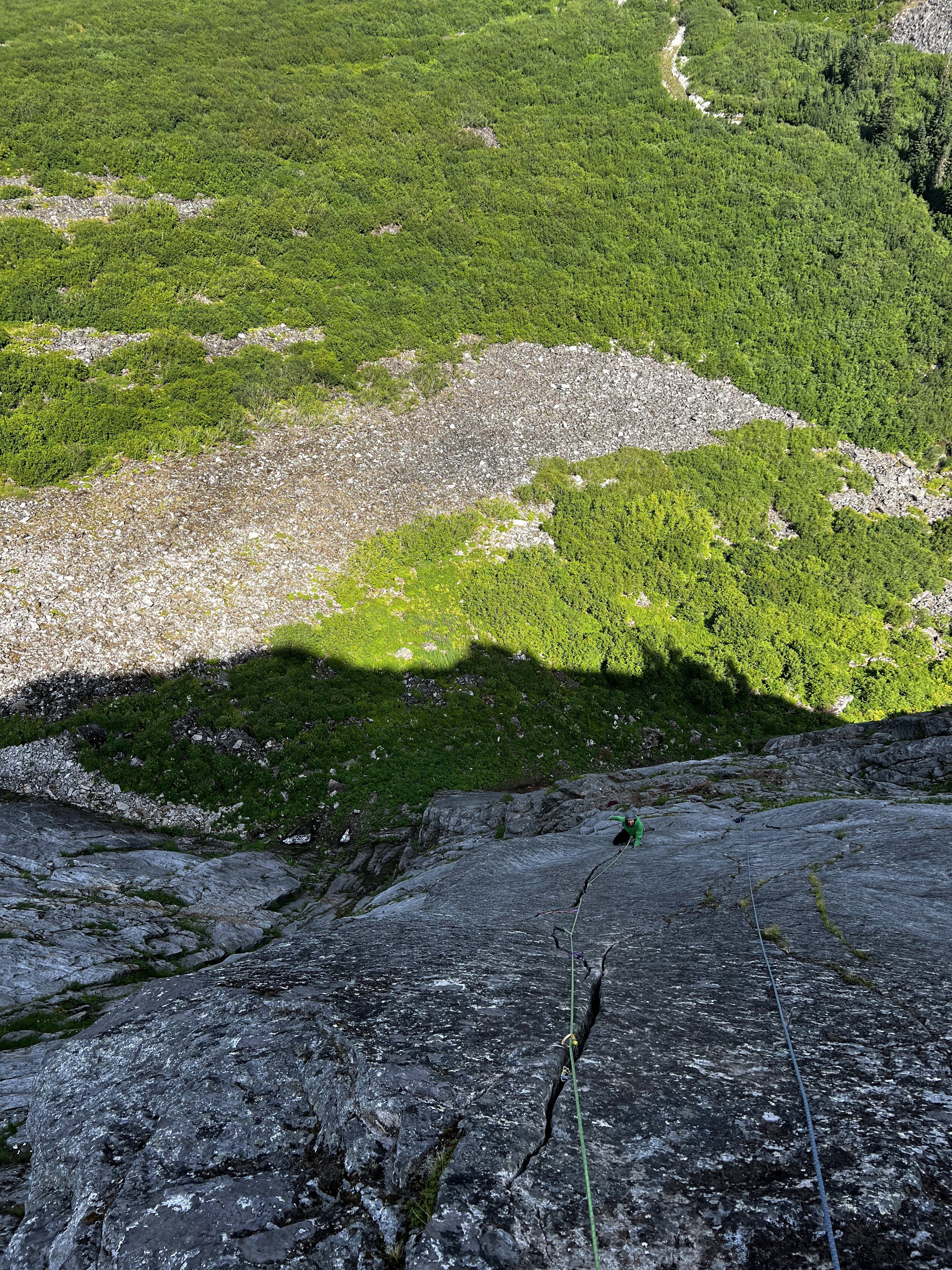
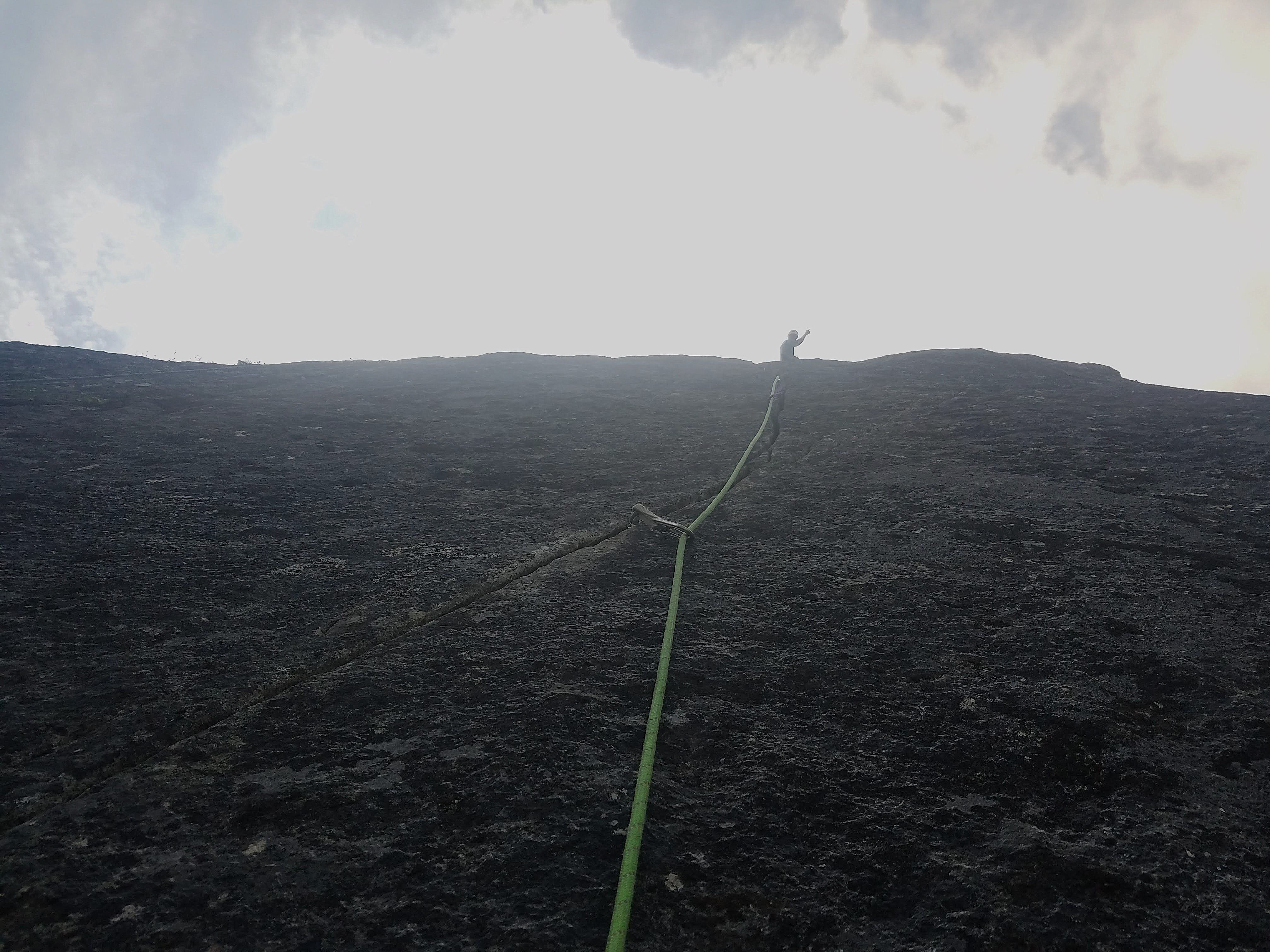
.jpg.bdabd6c4d8ebc9668d06dd06dc2df6a7.jpg)
